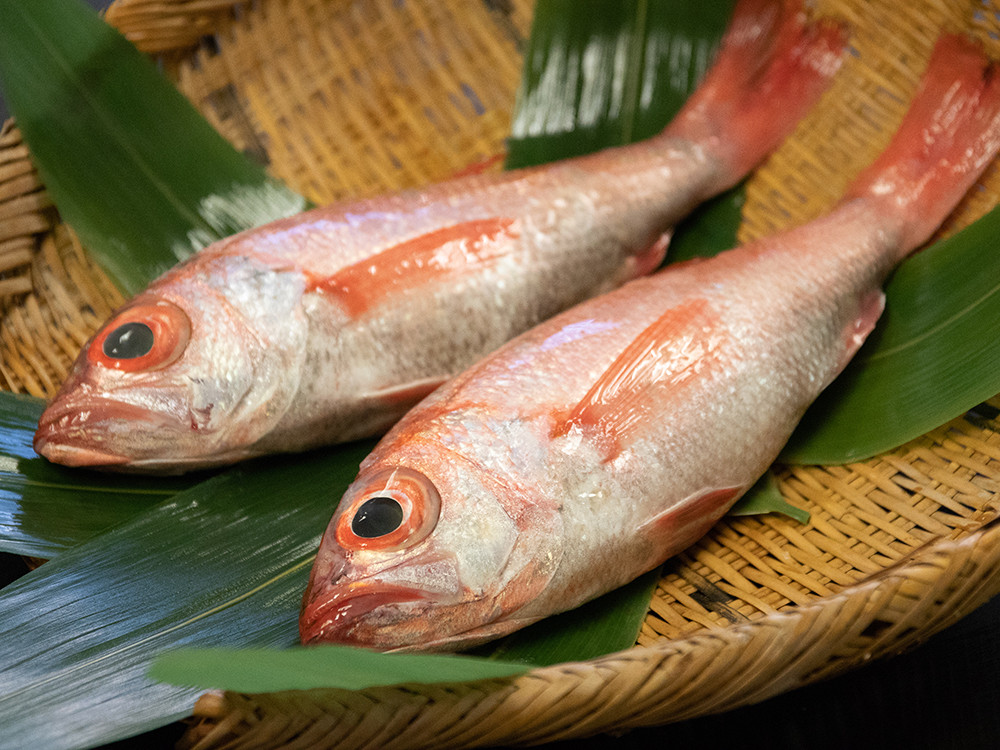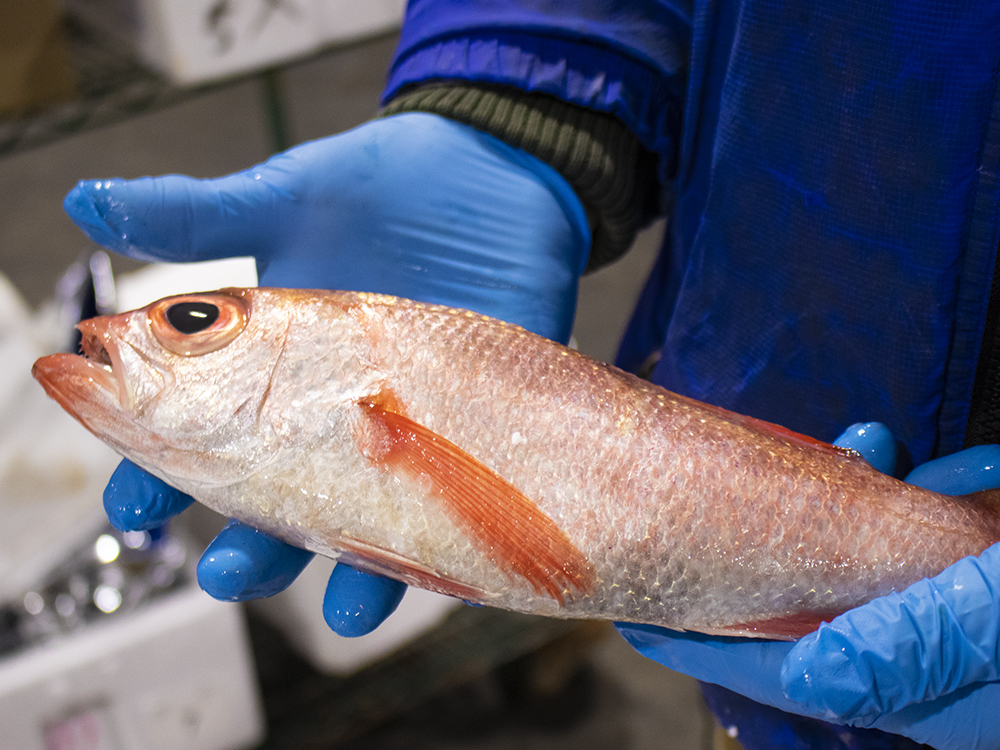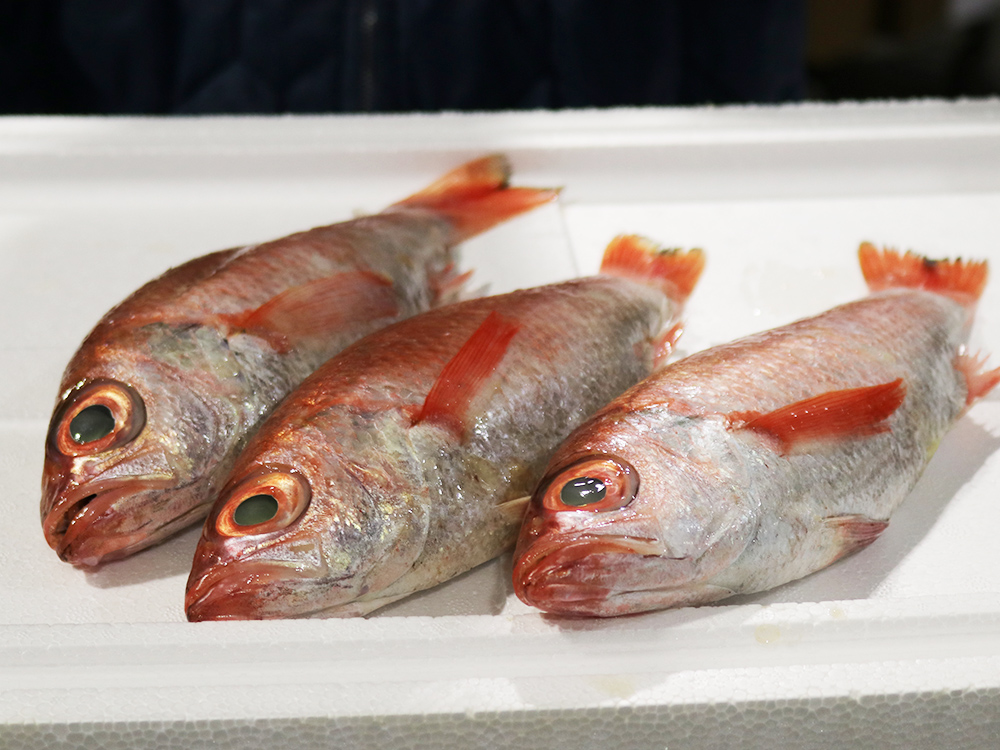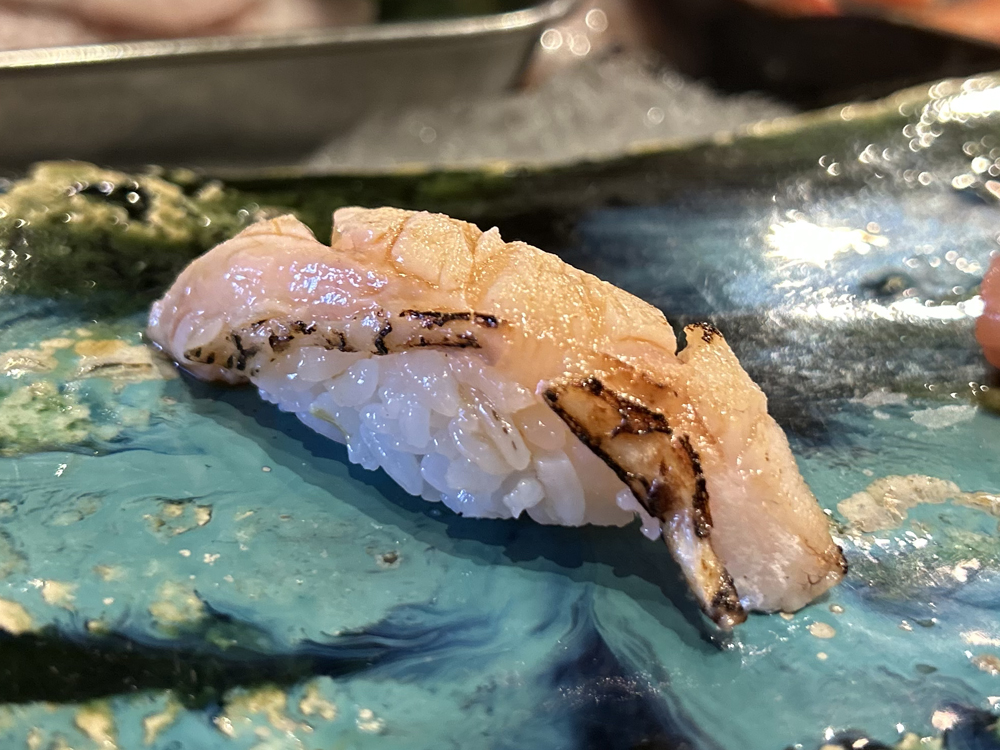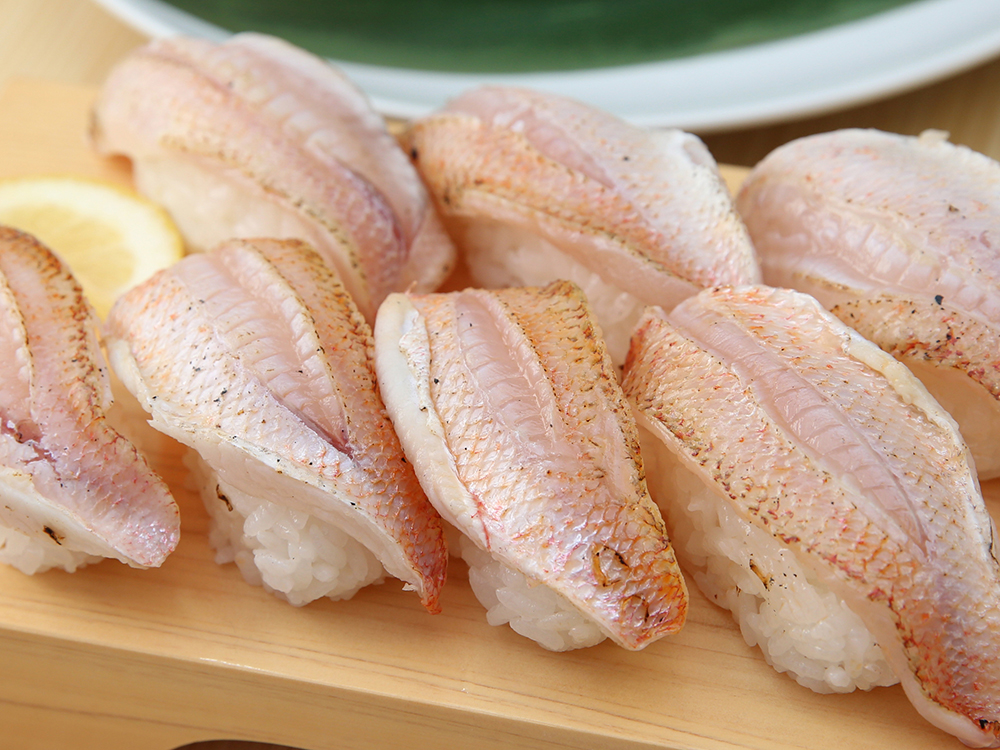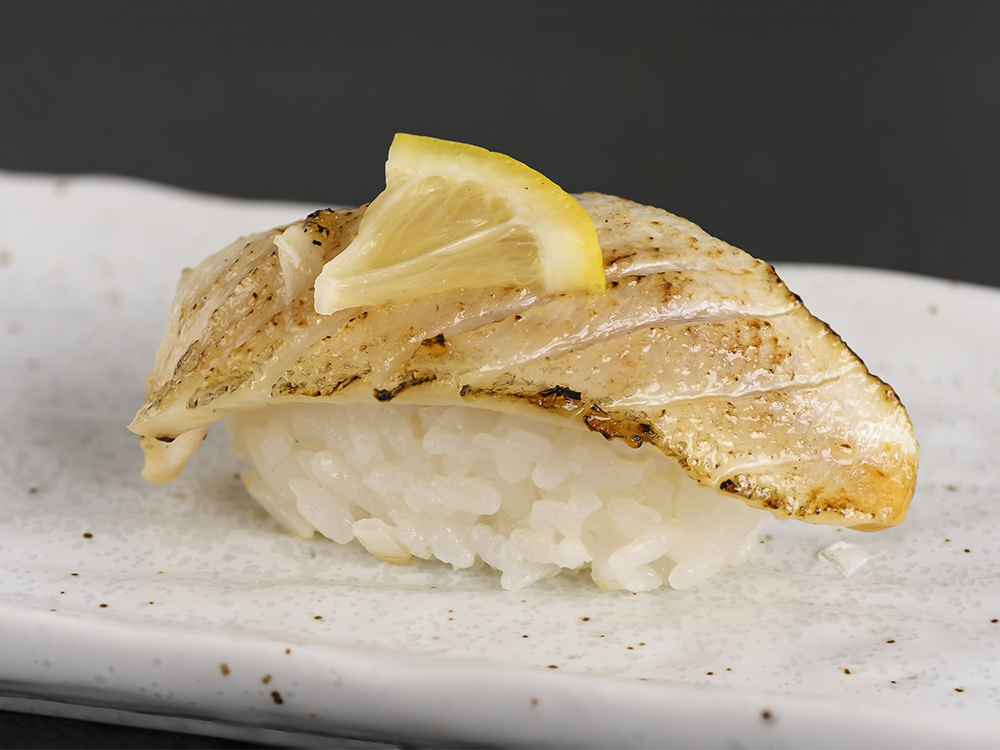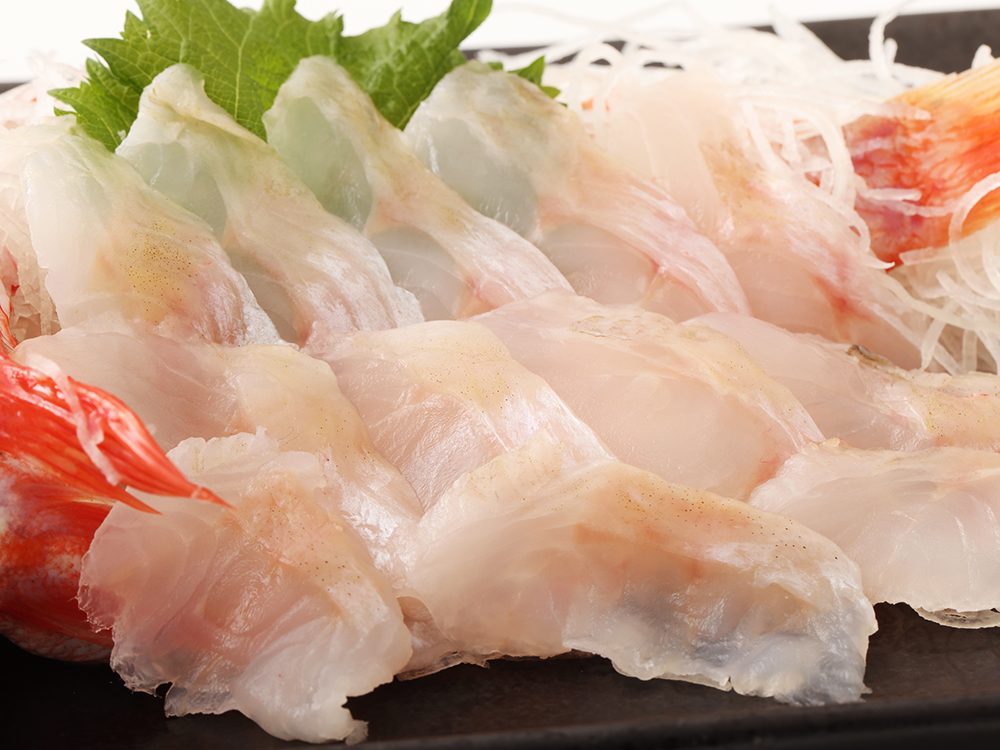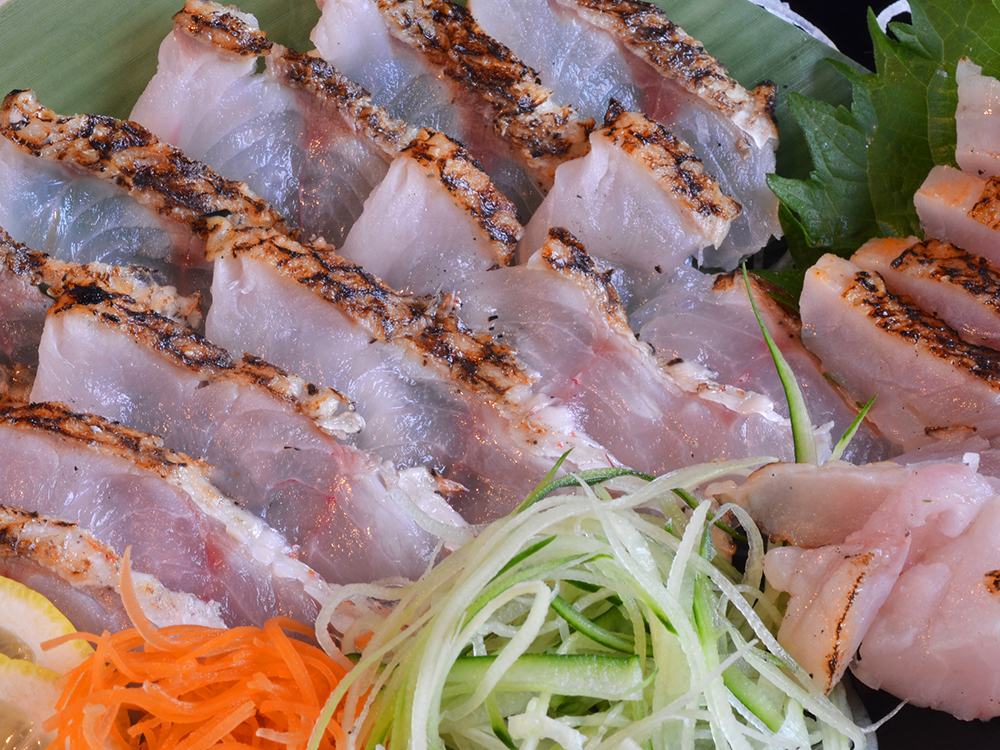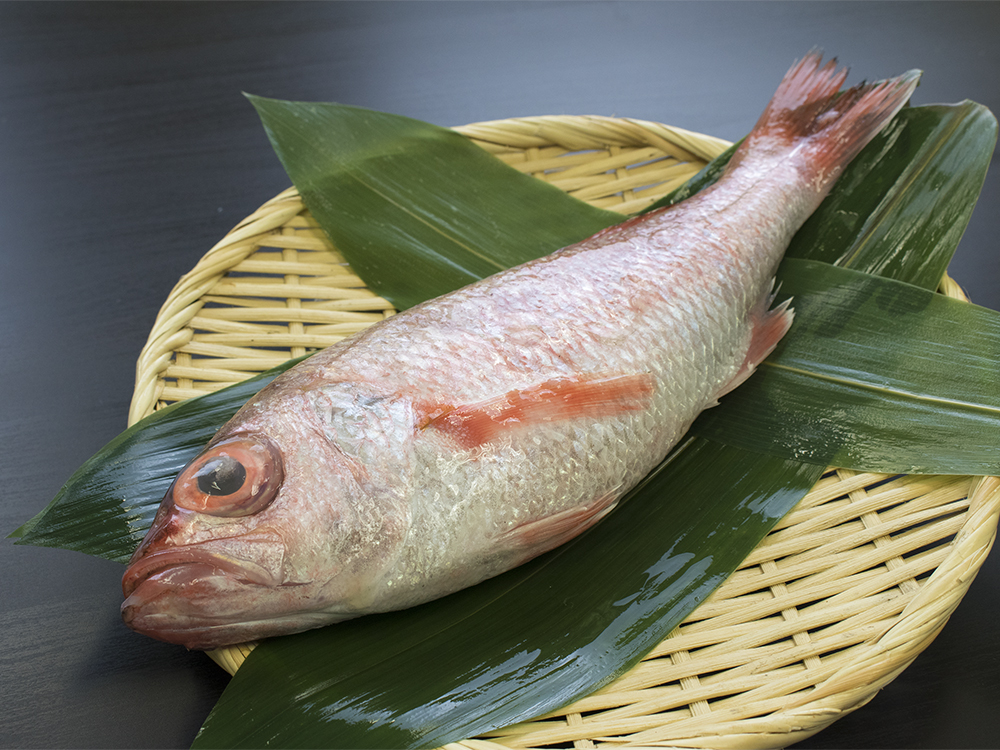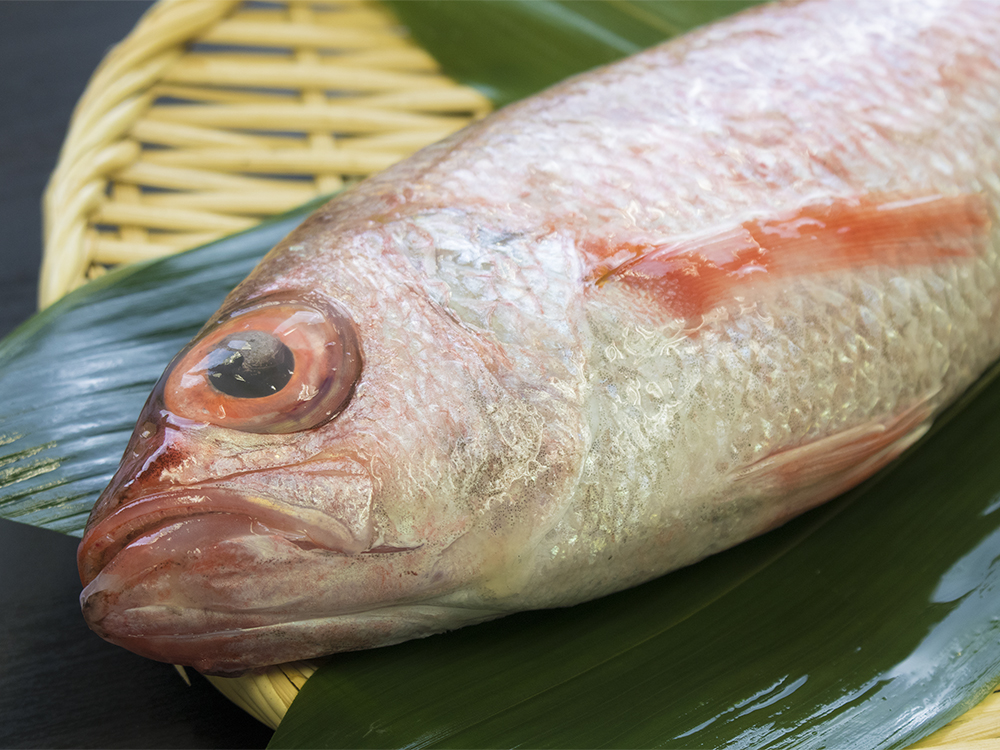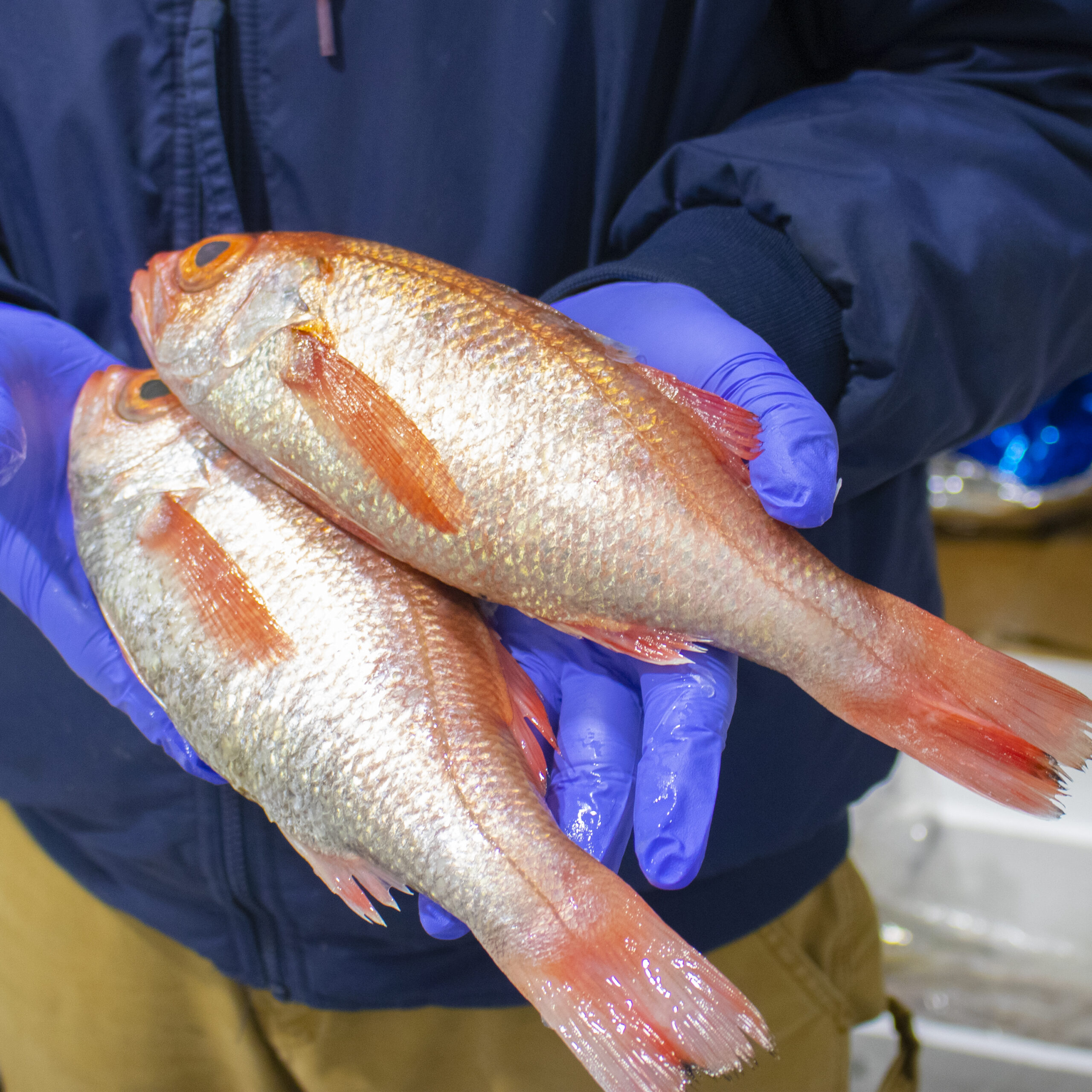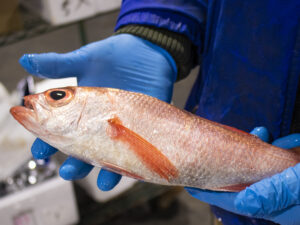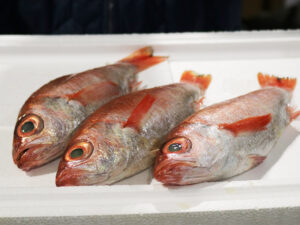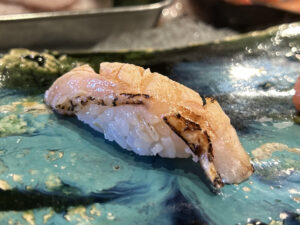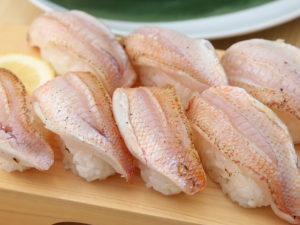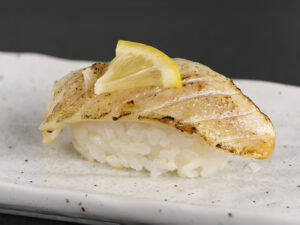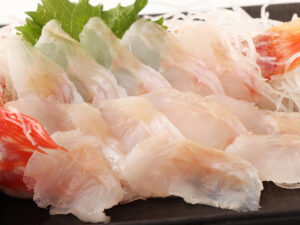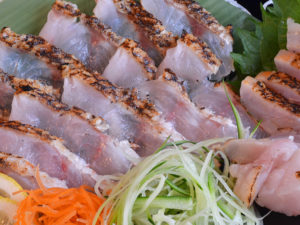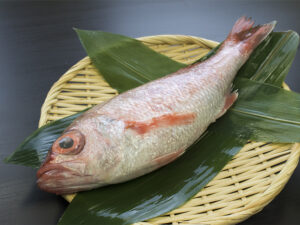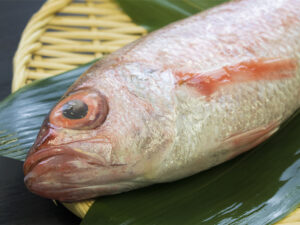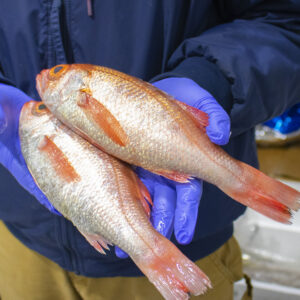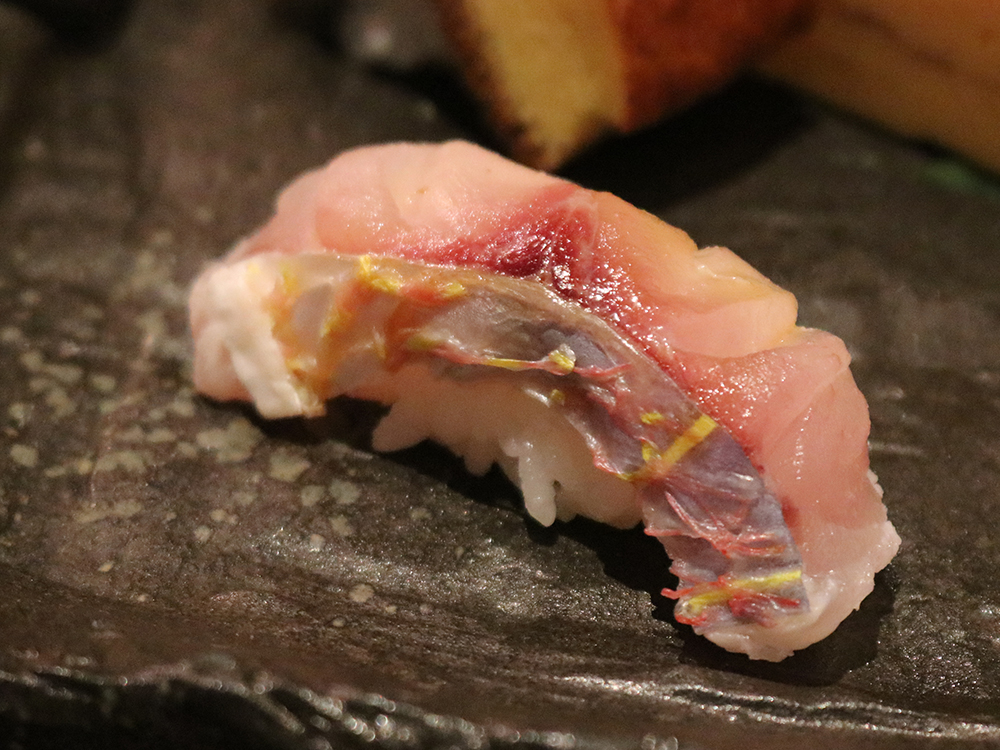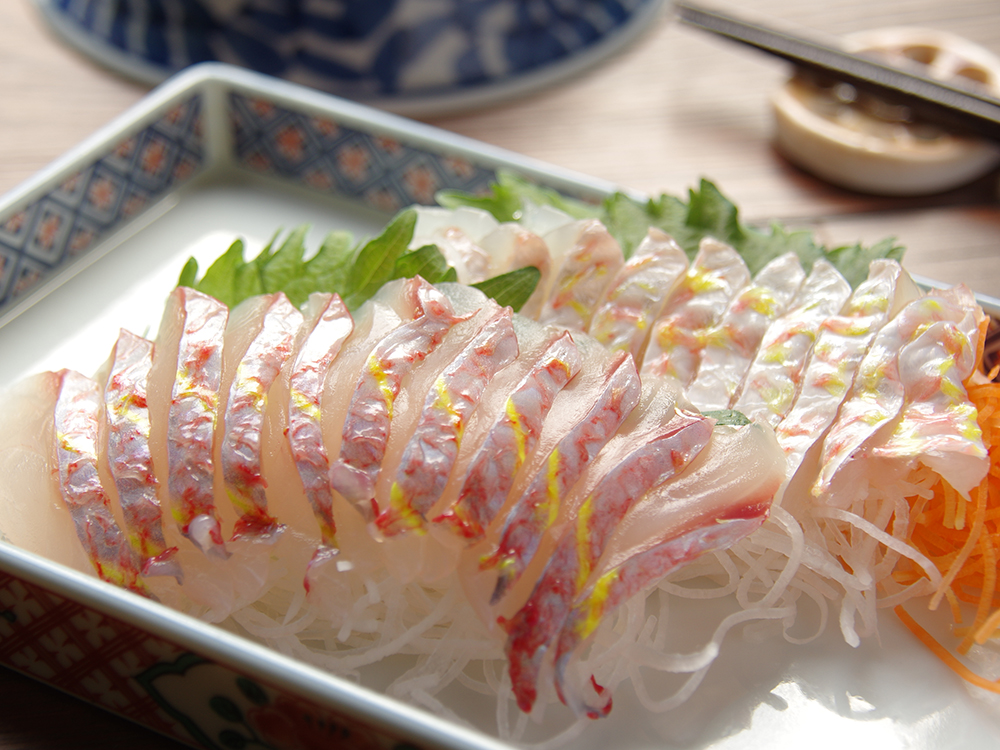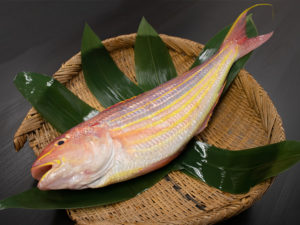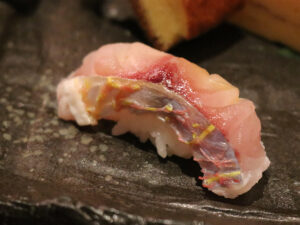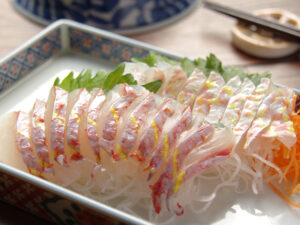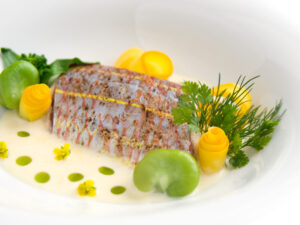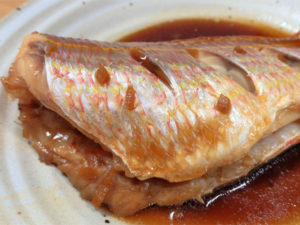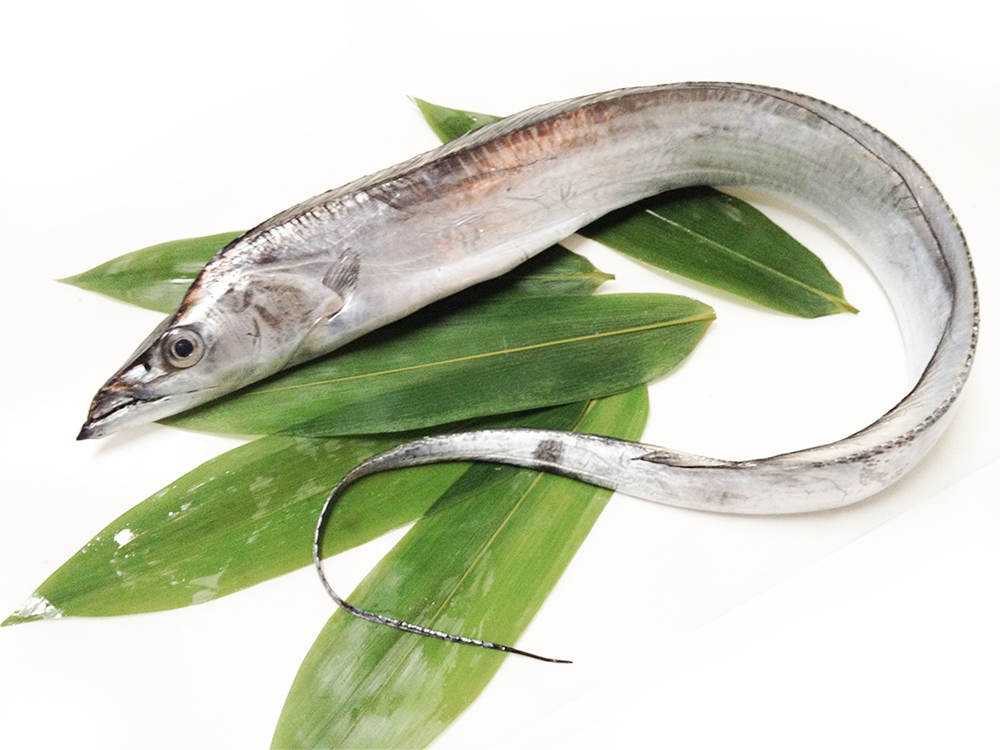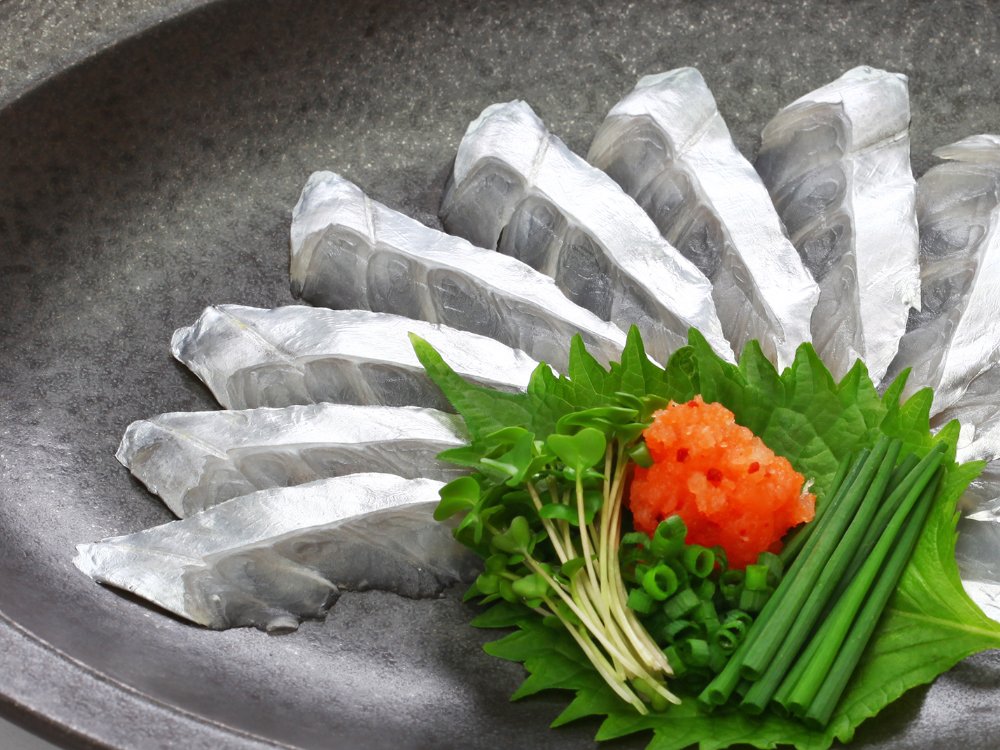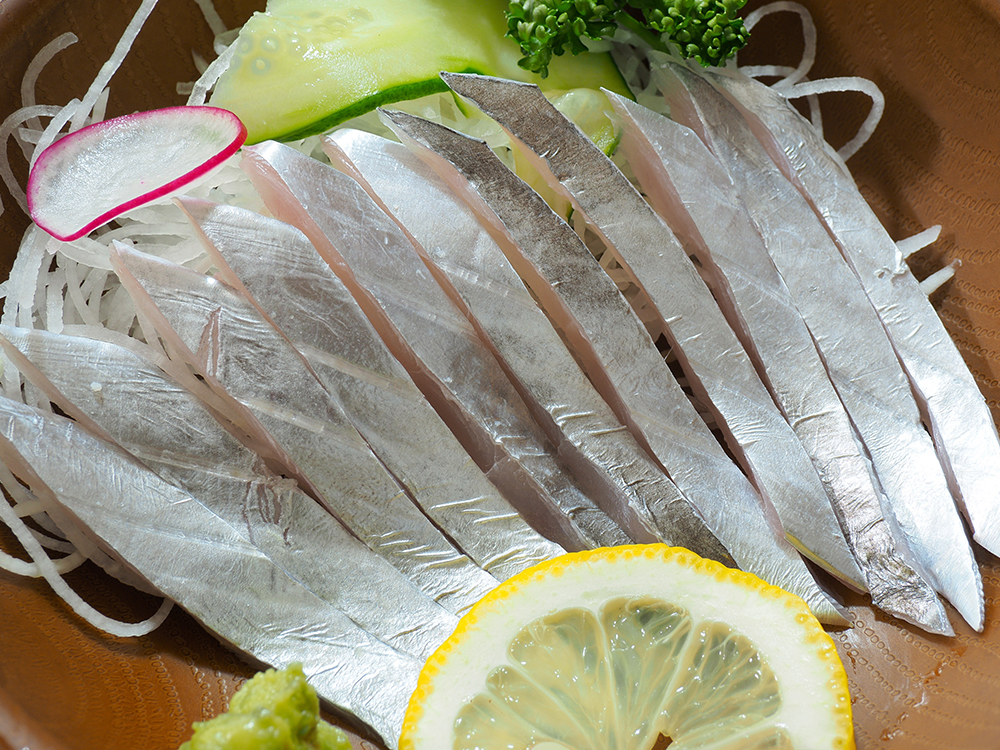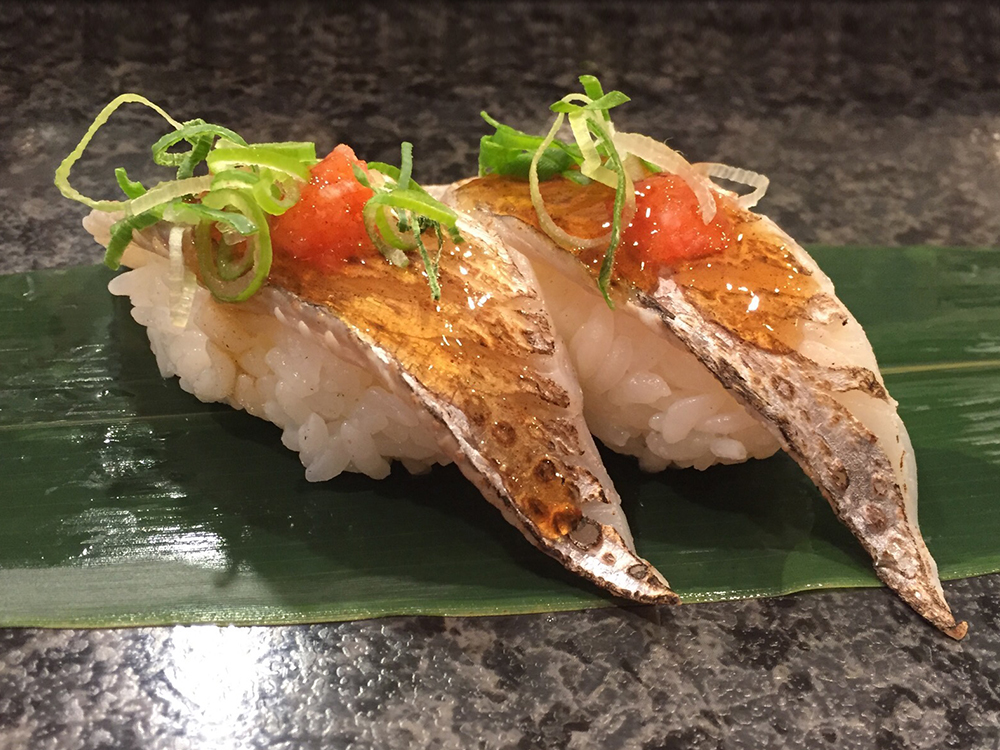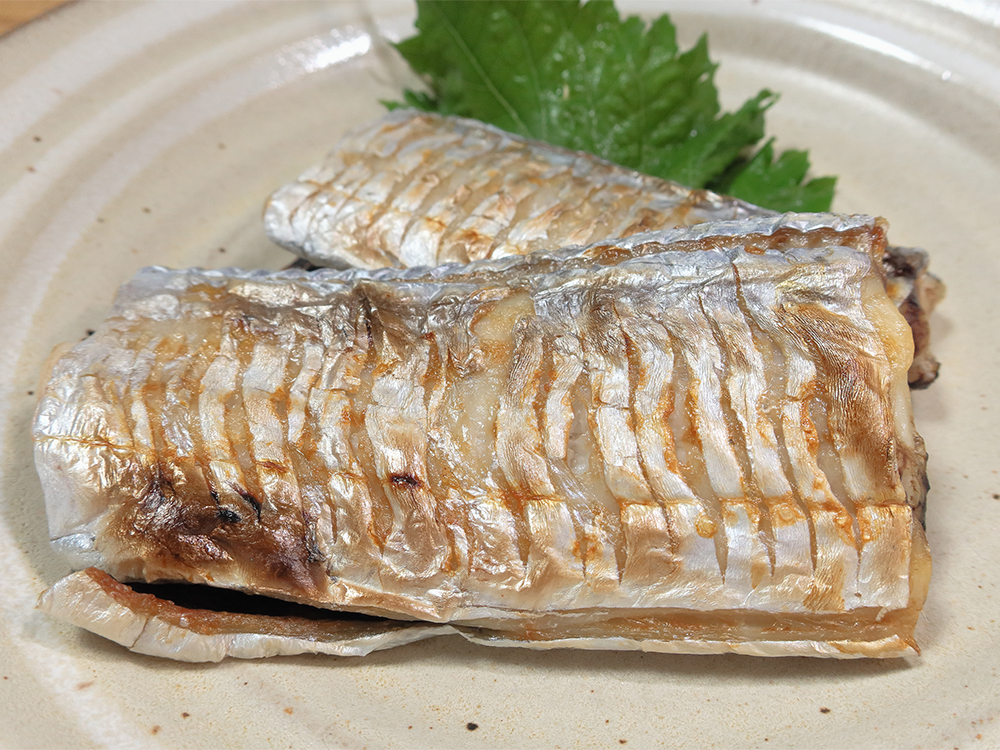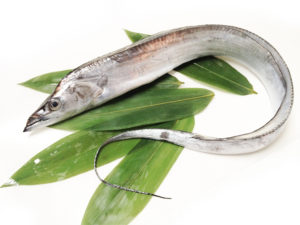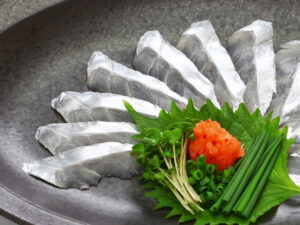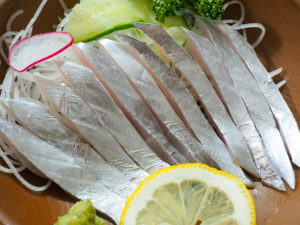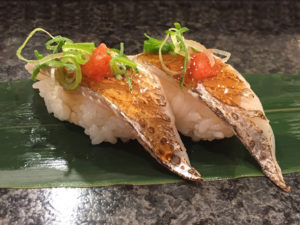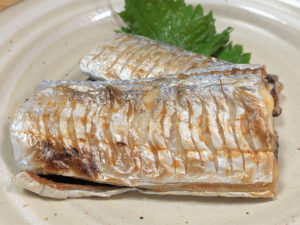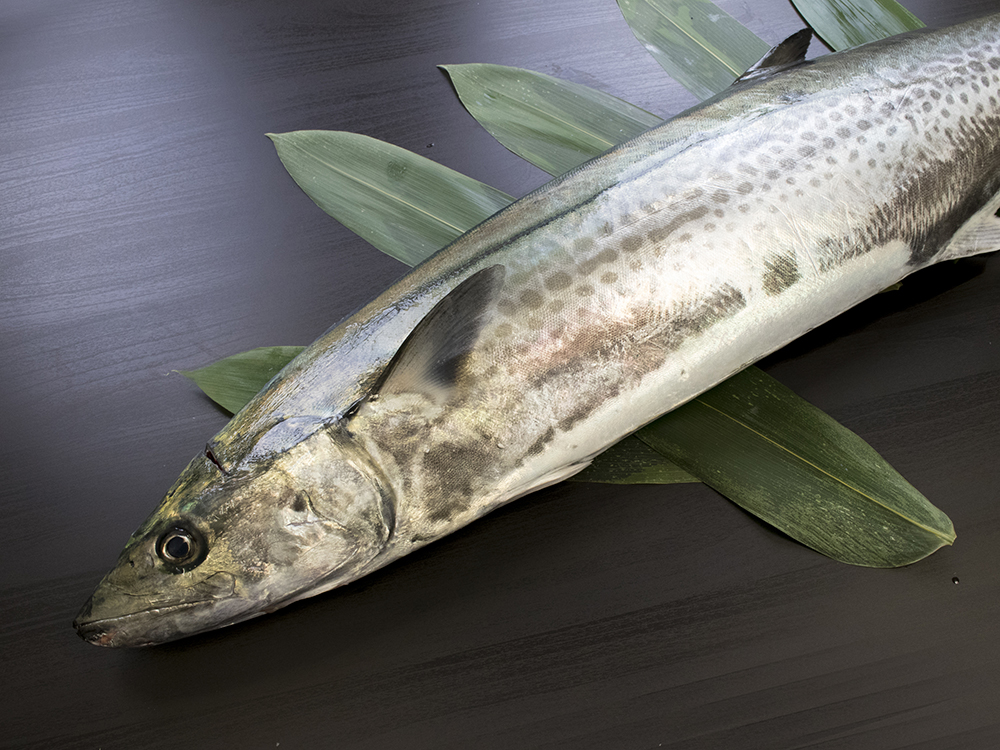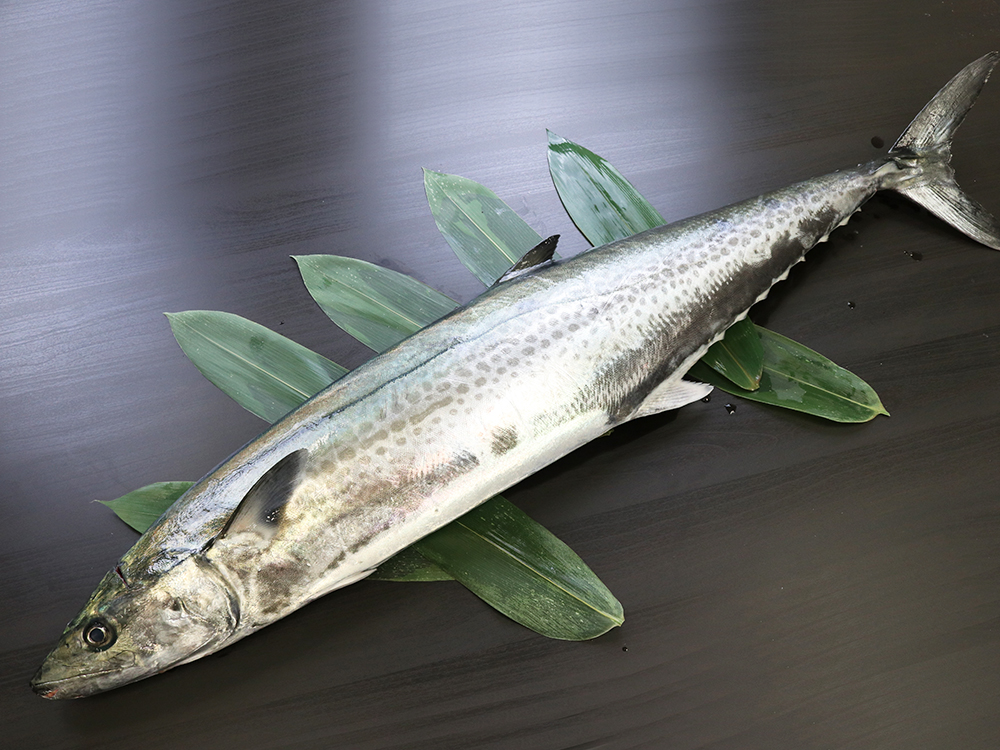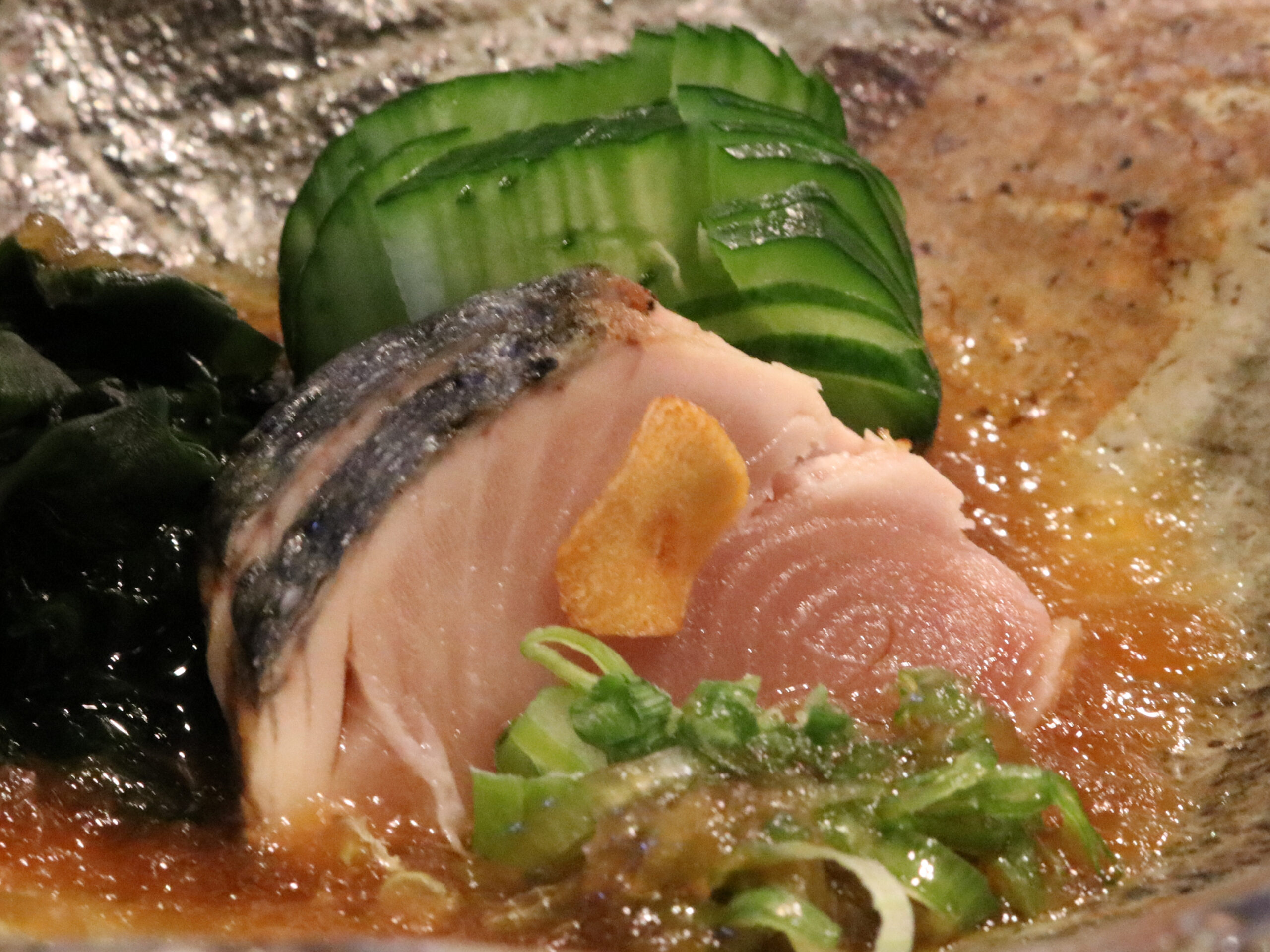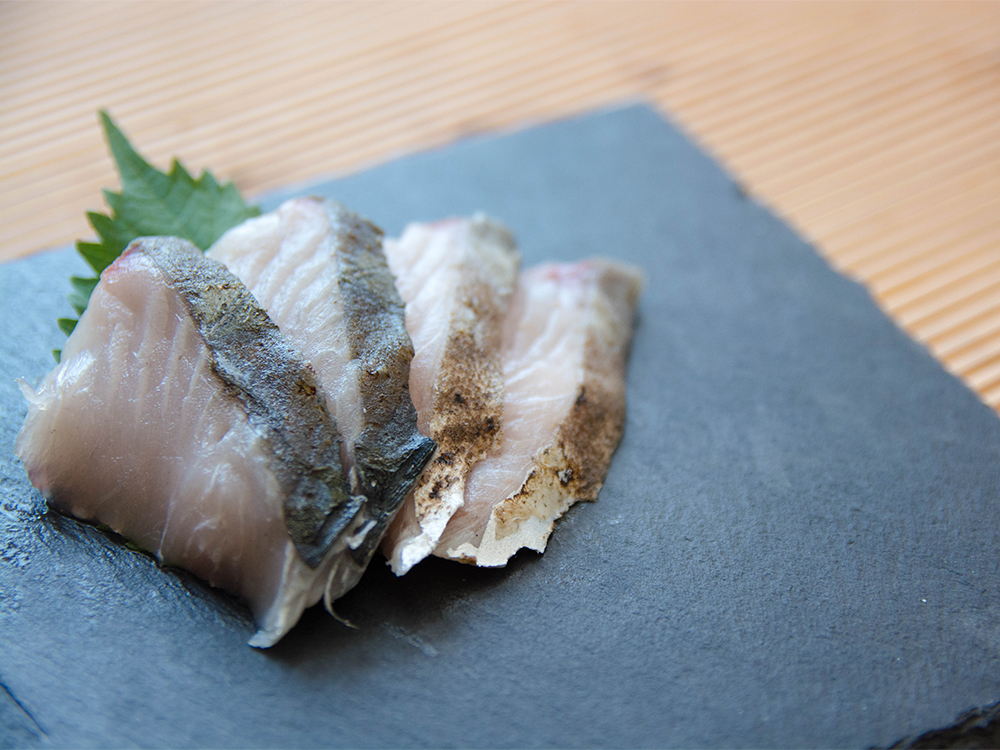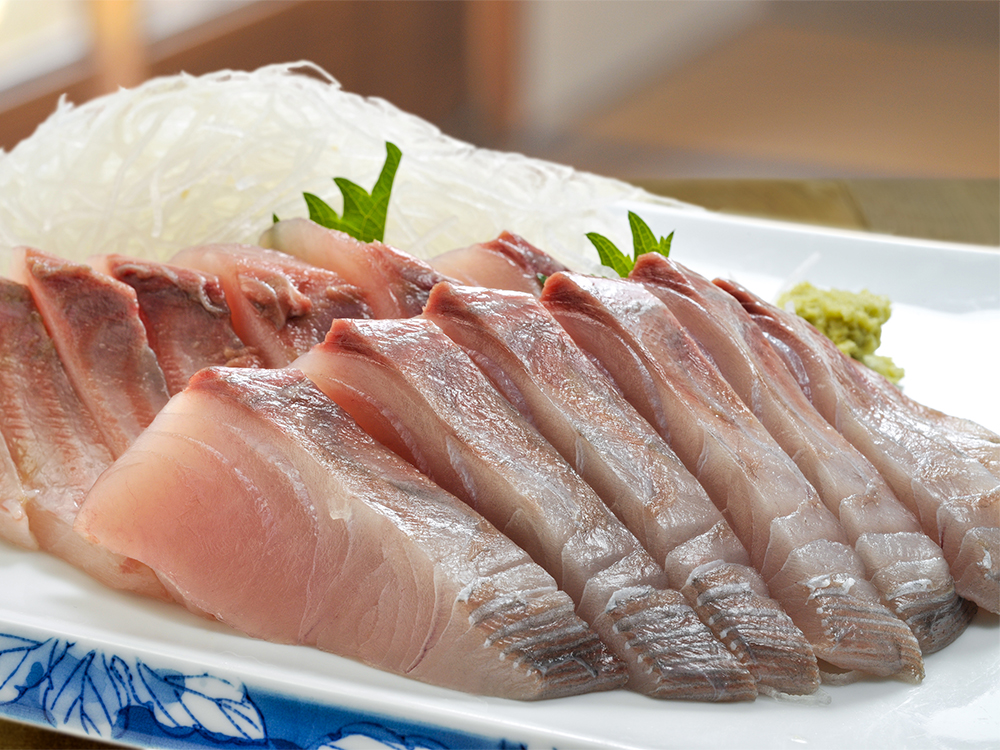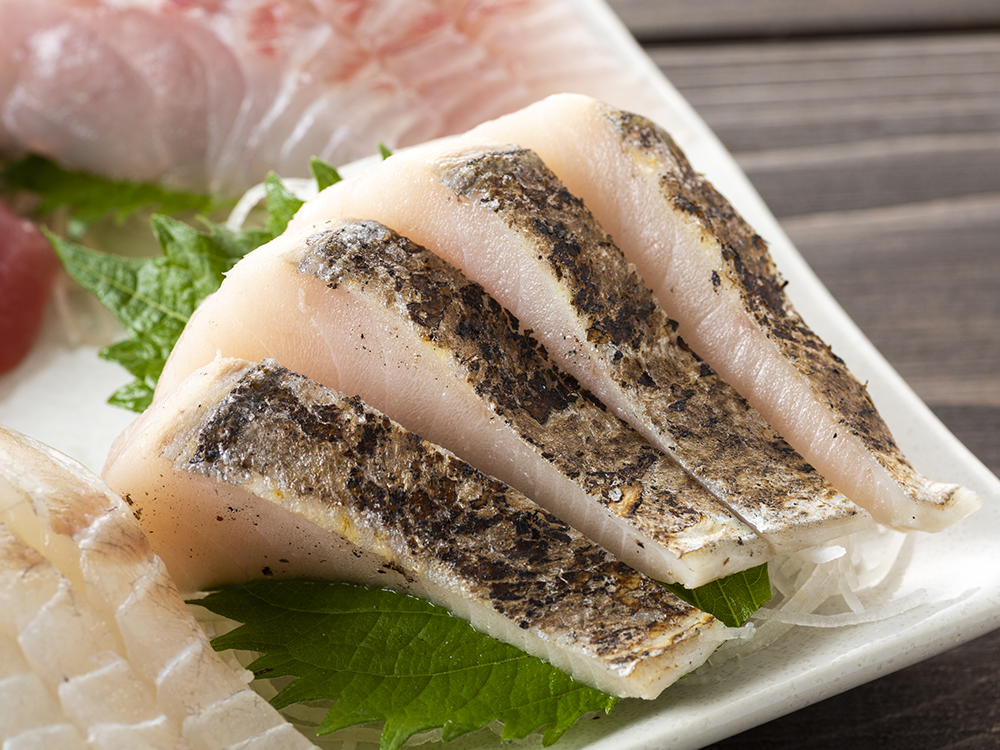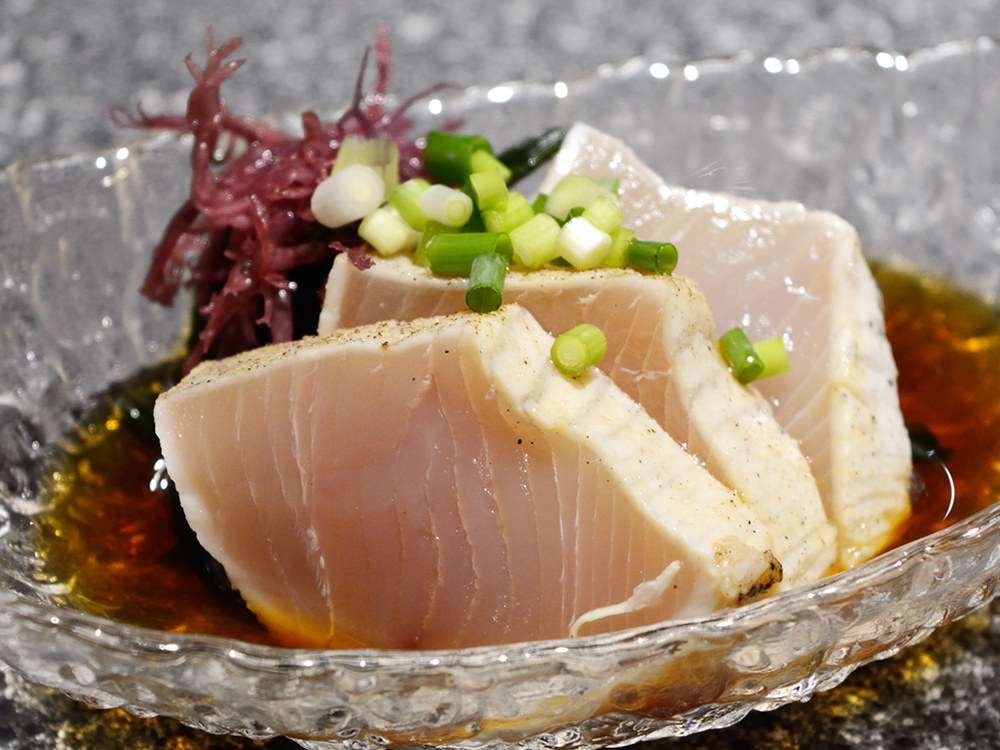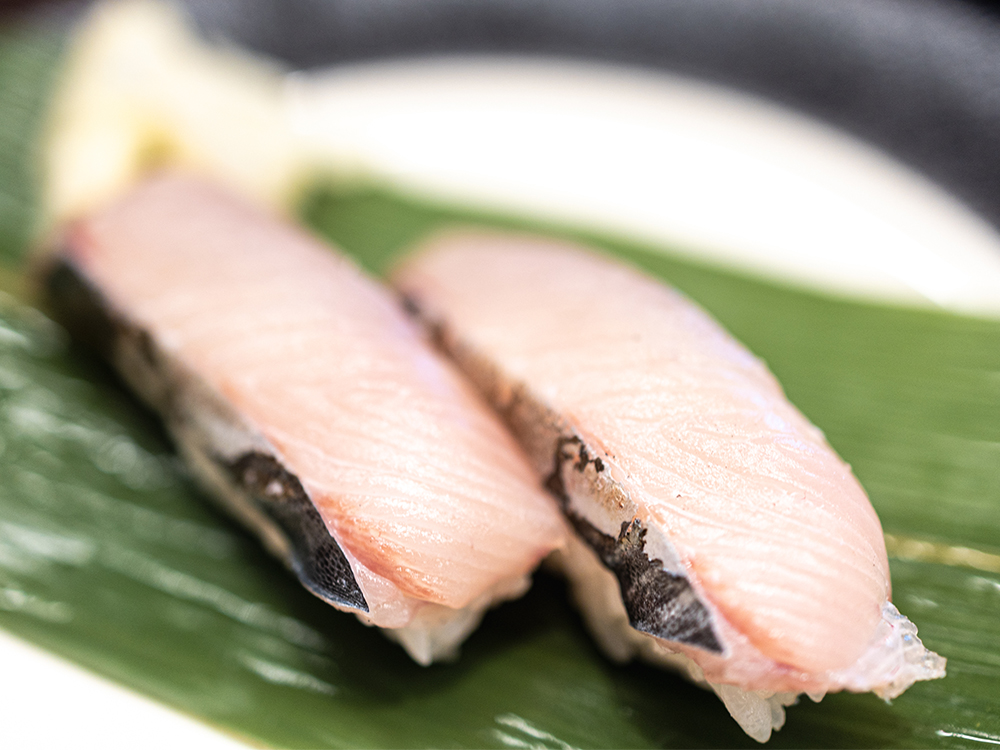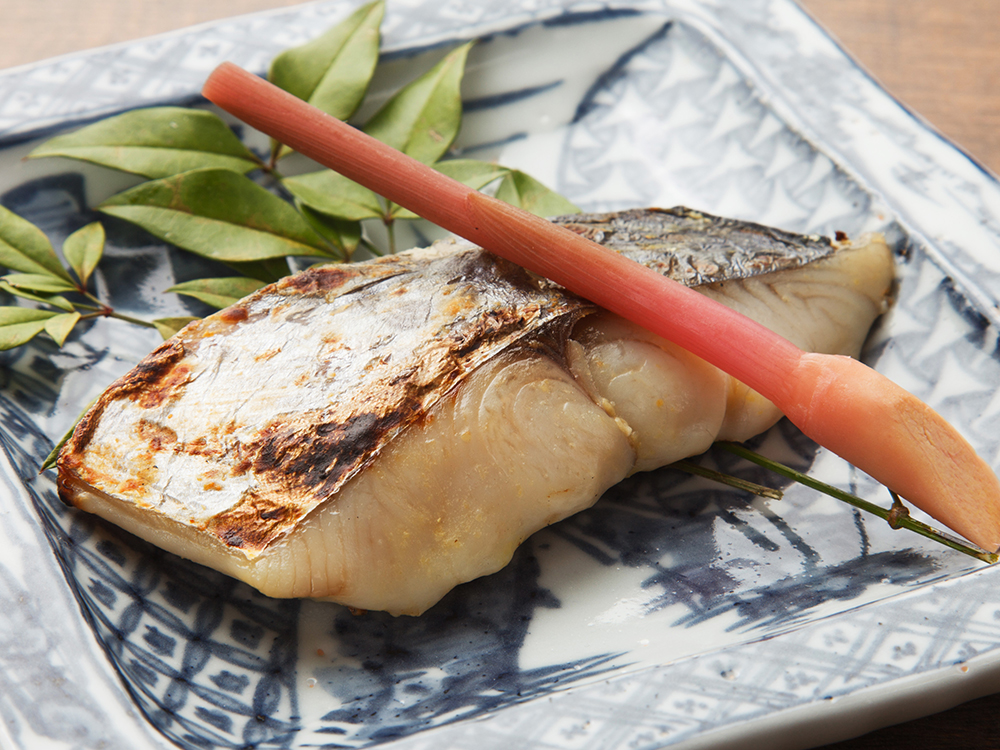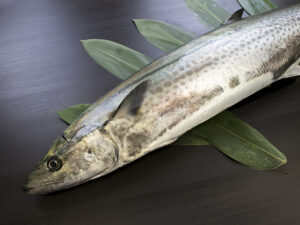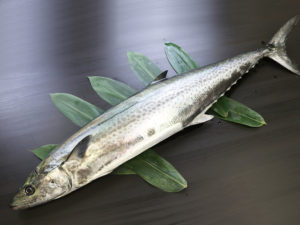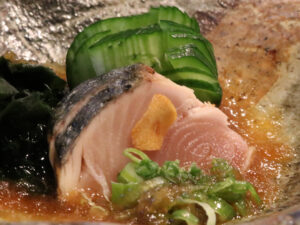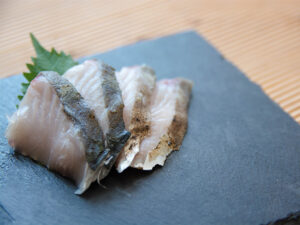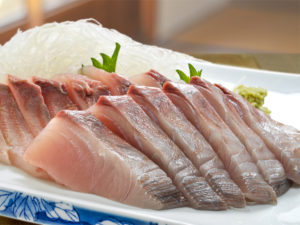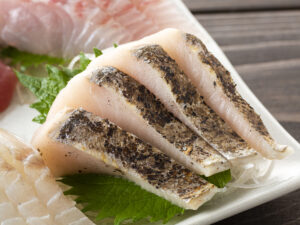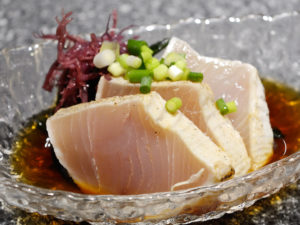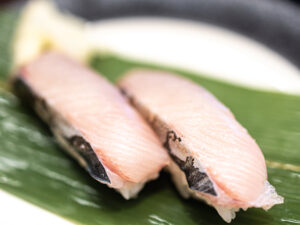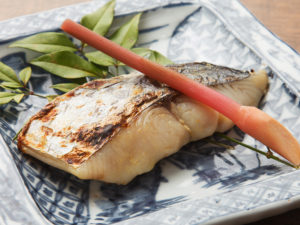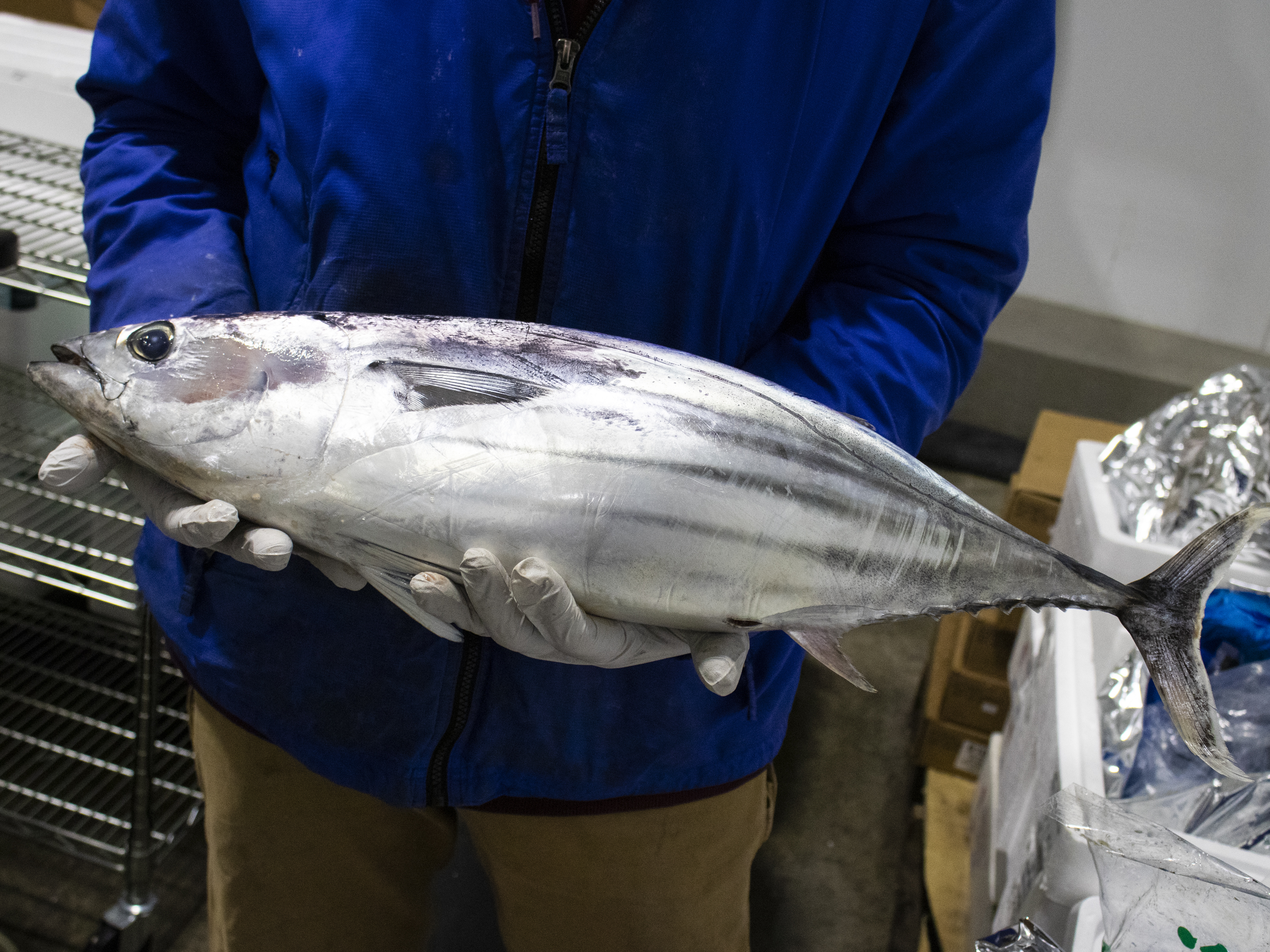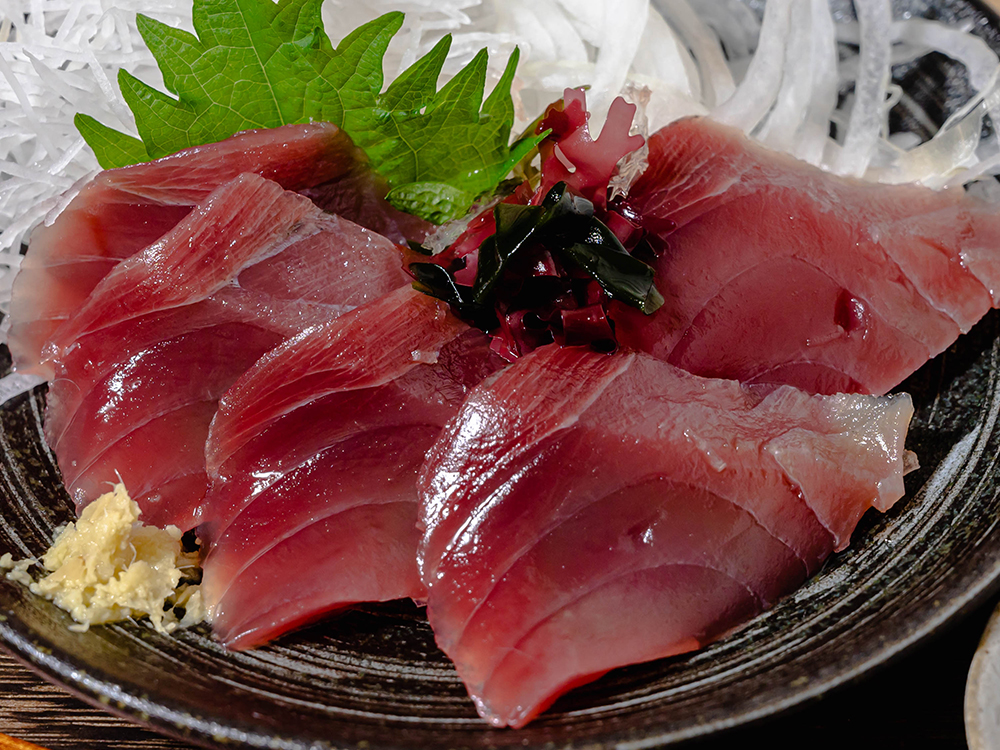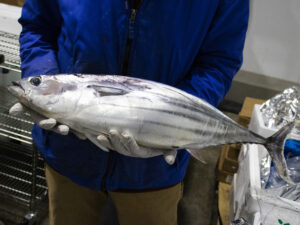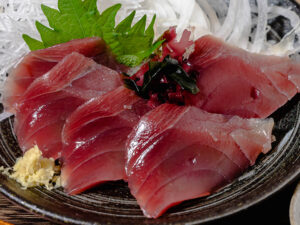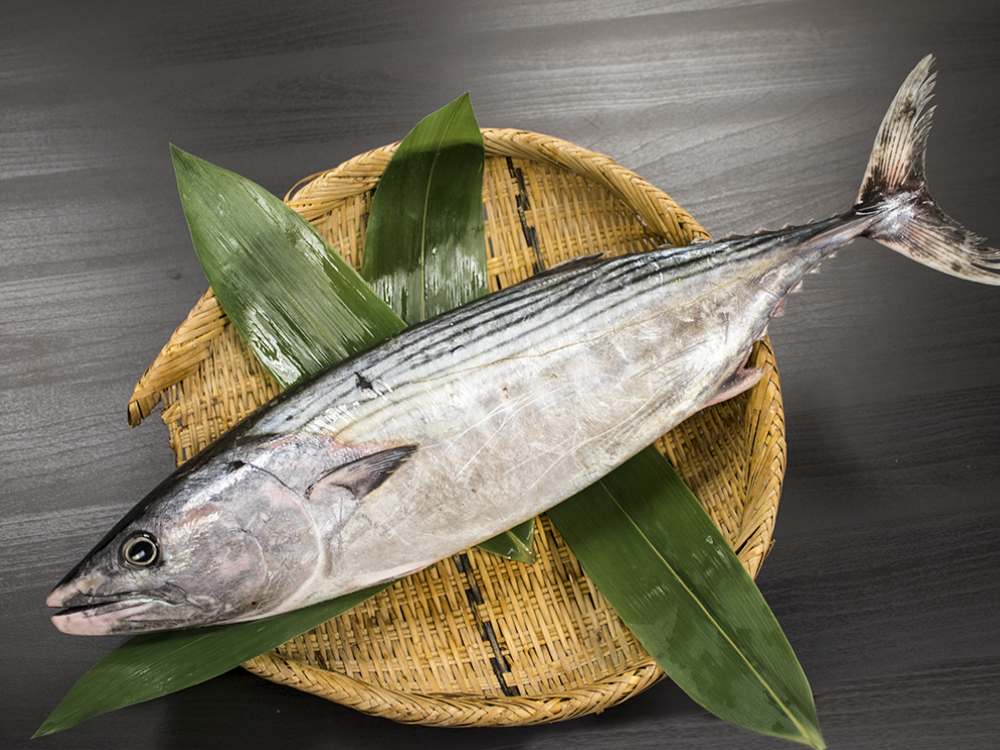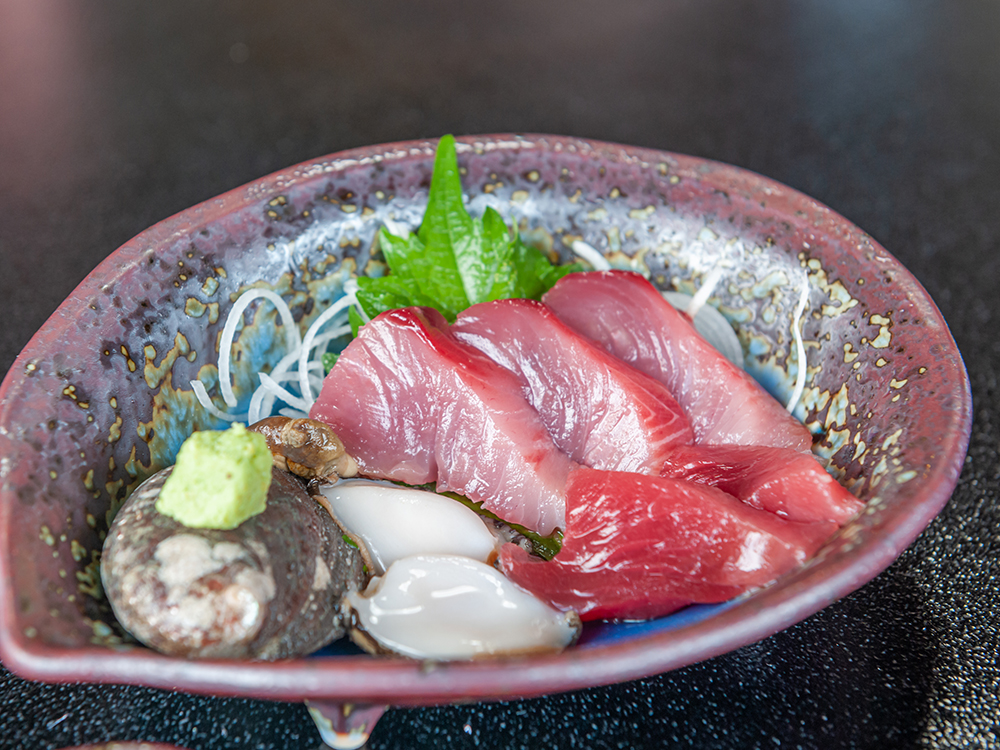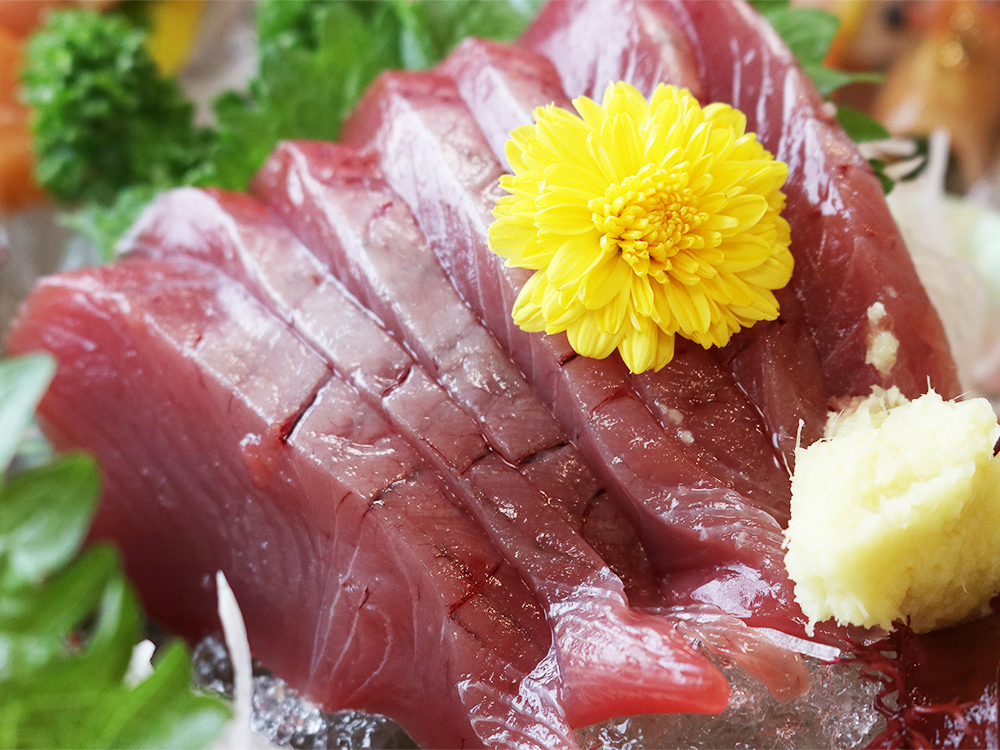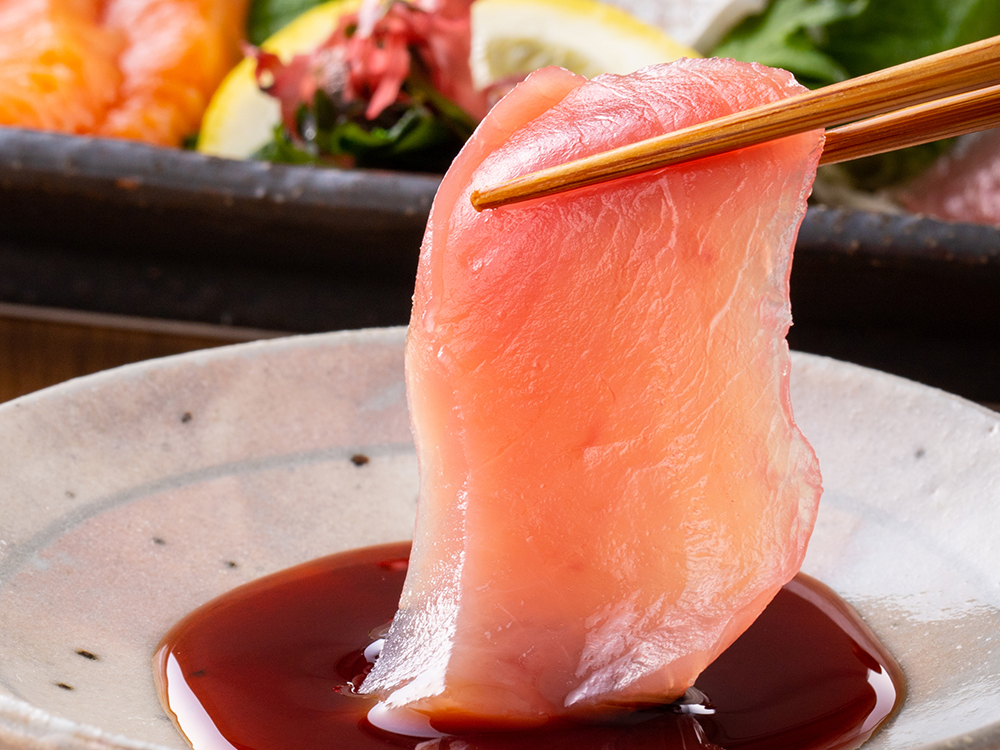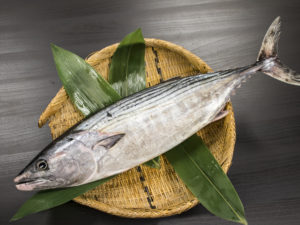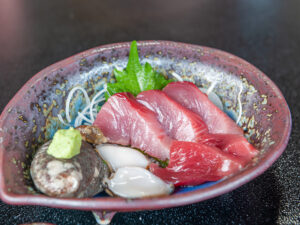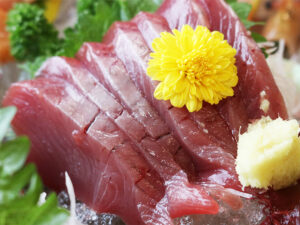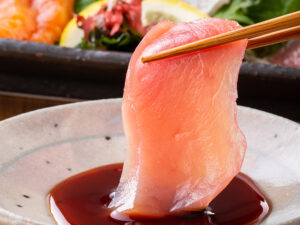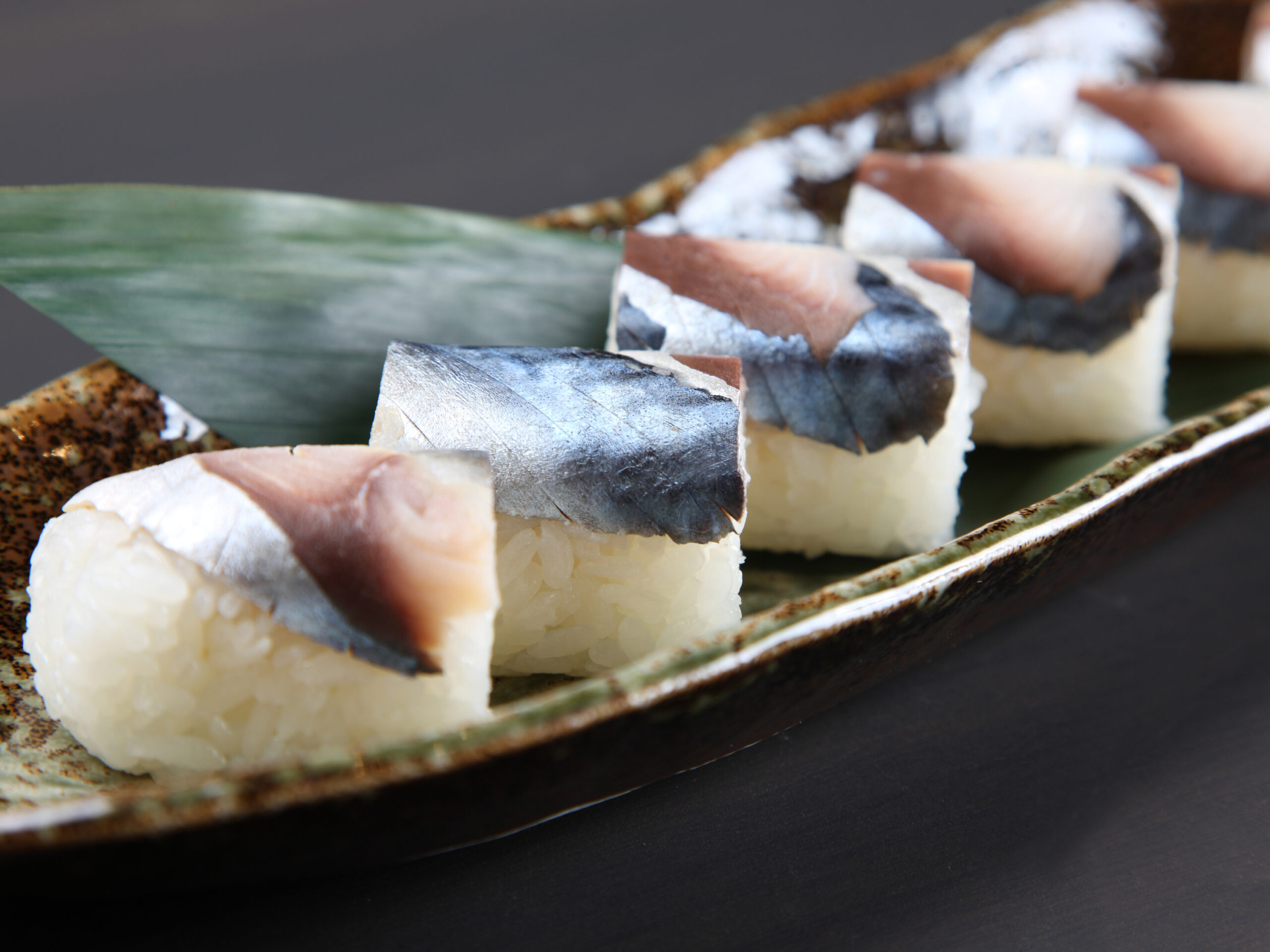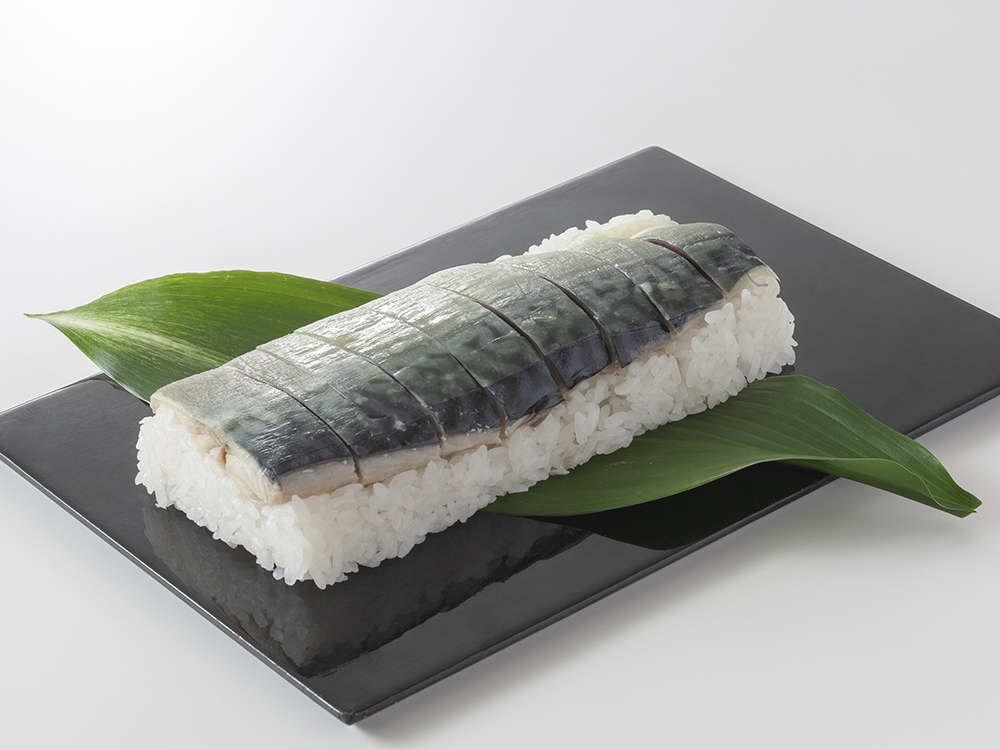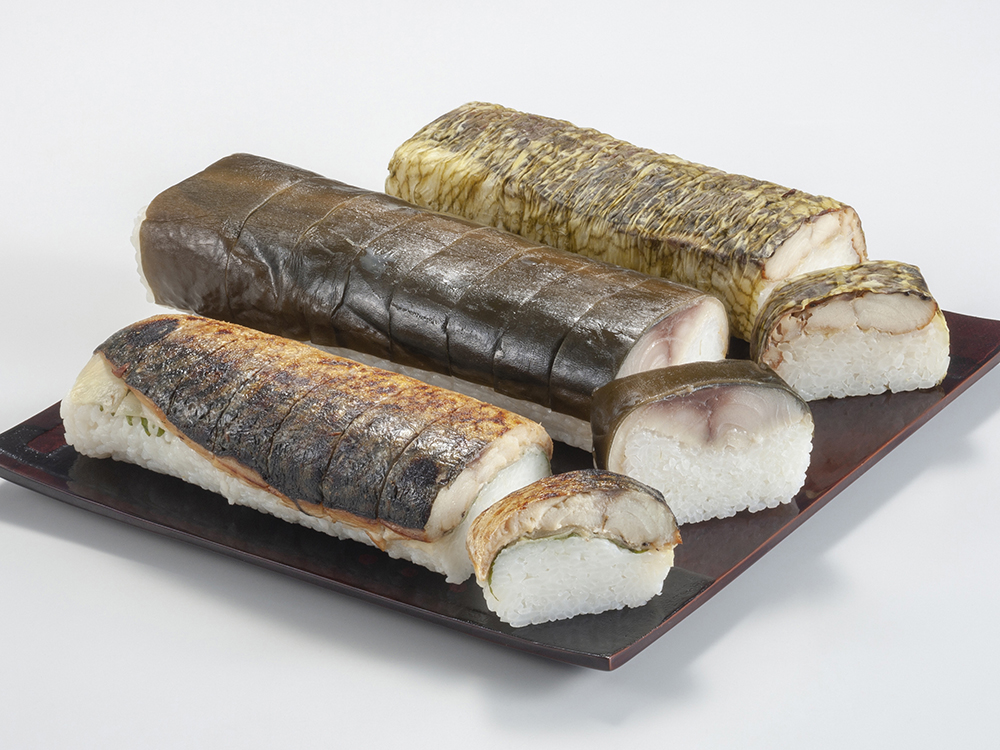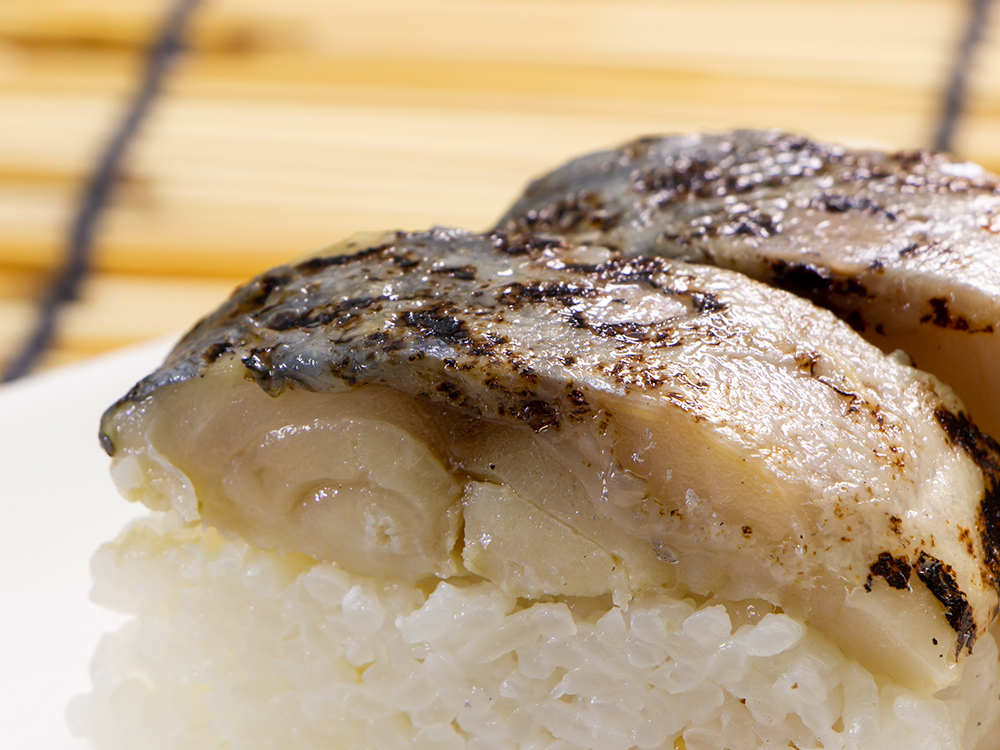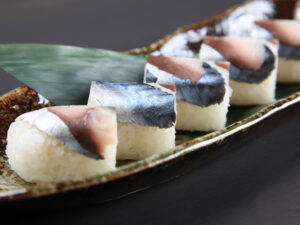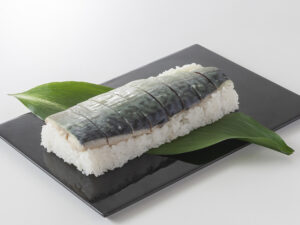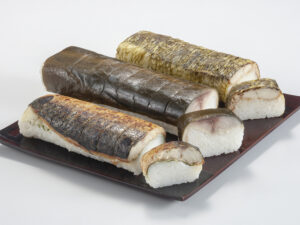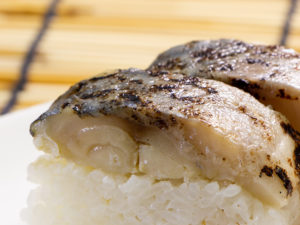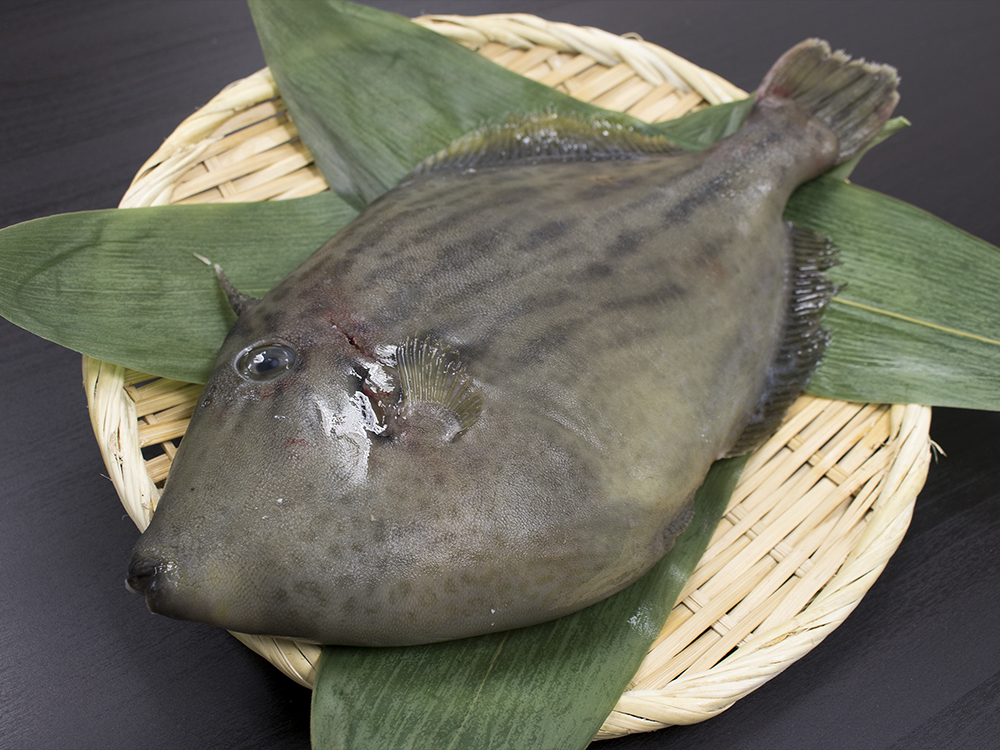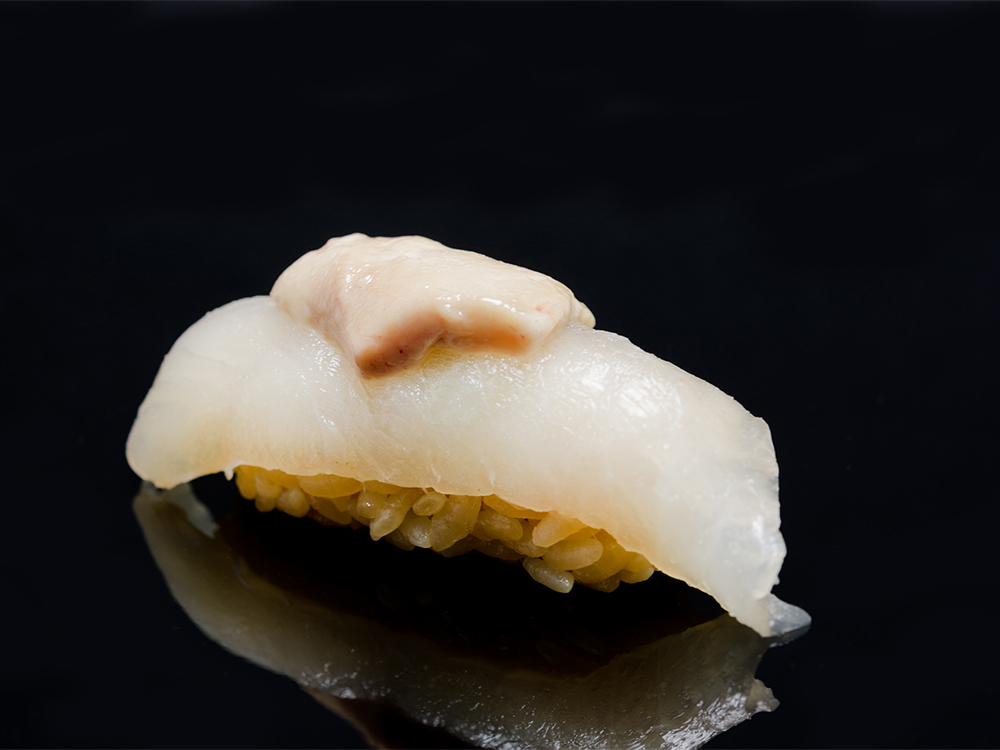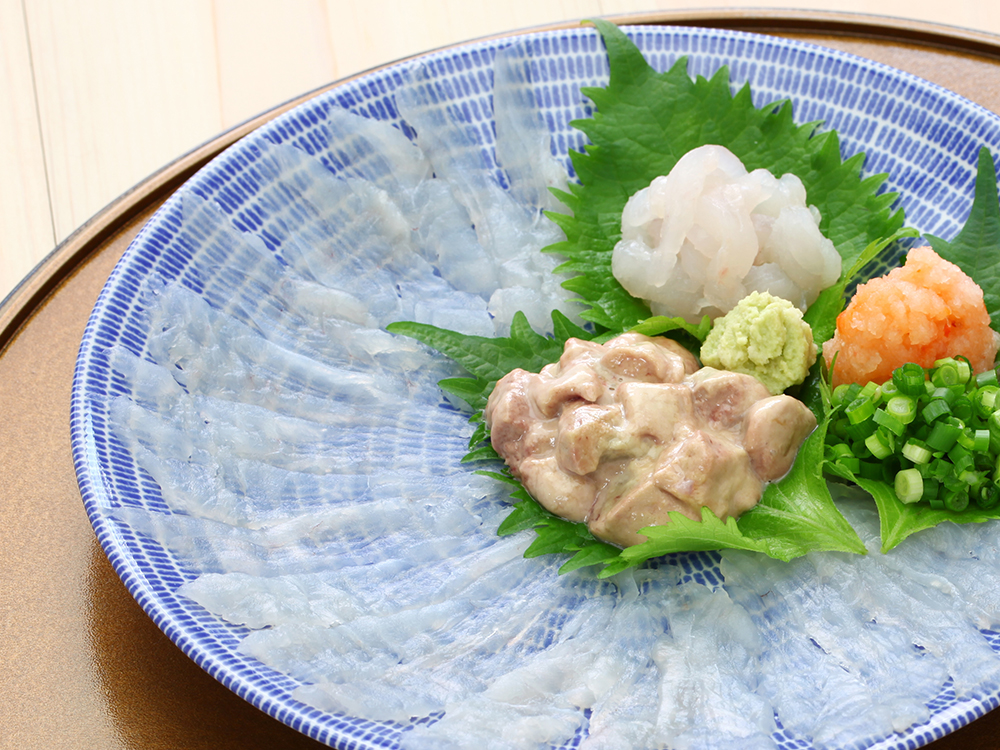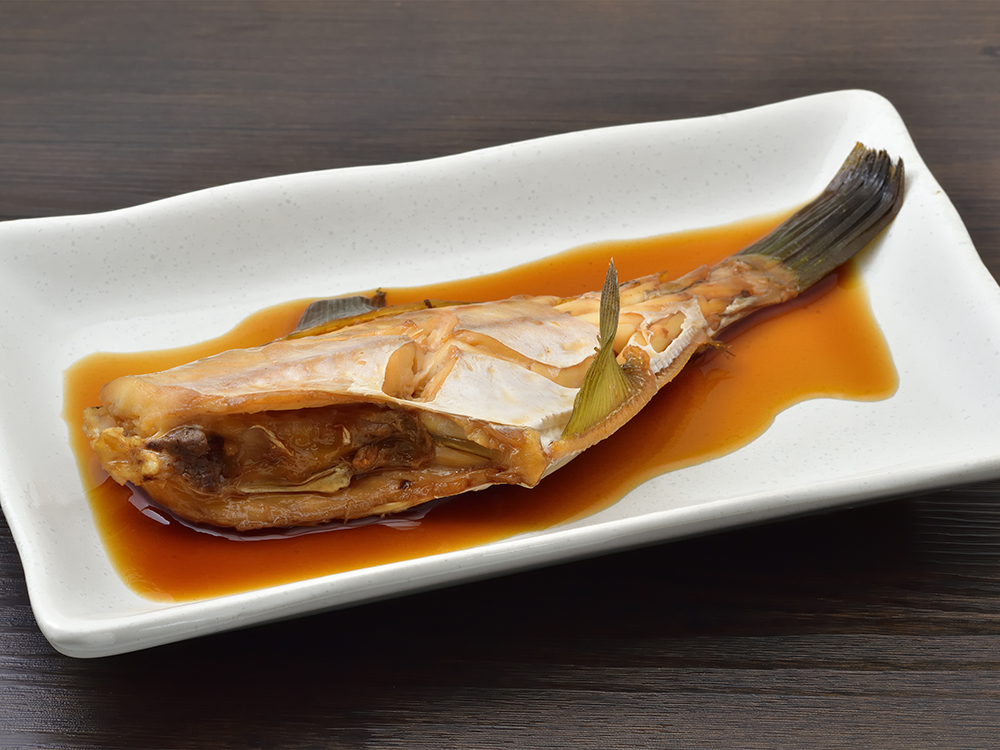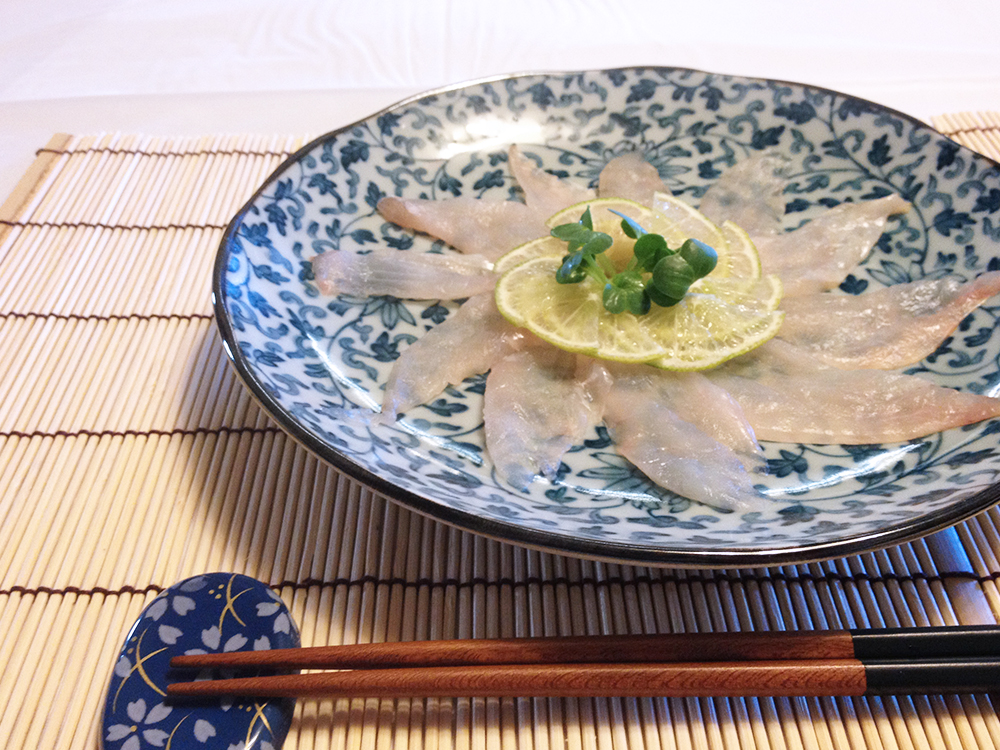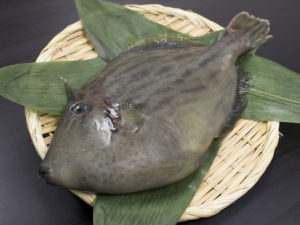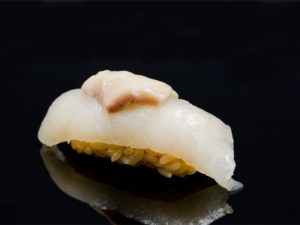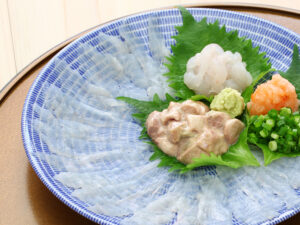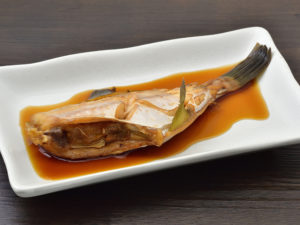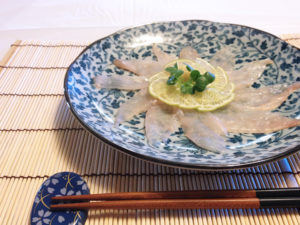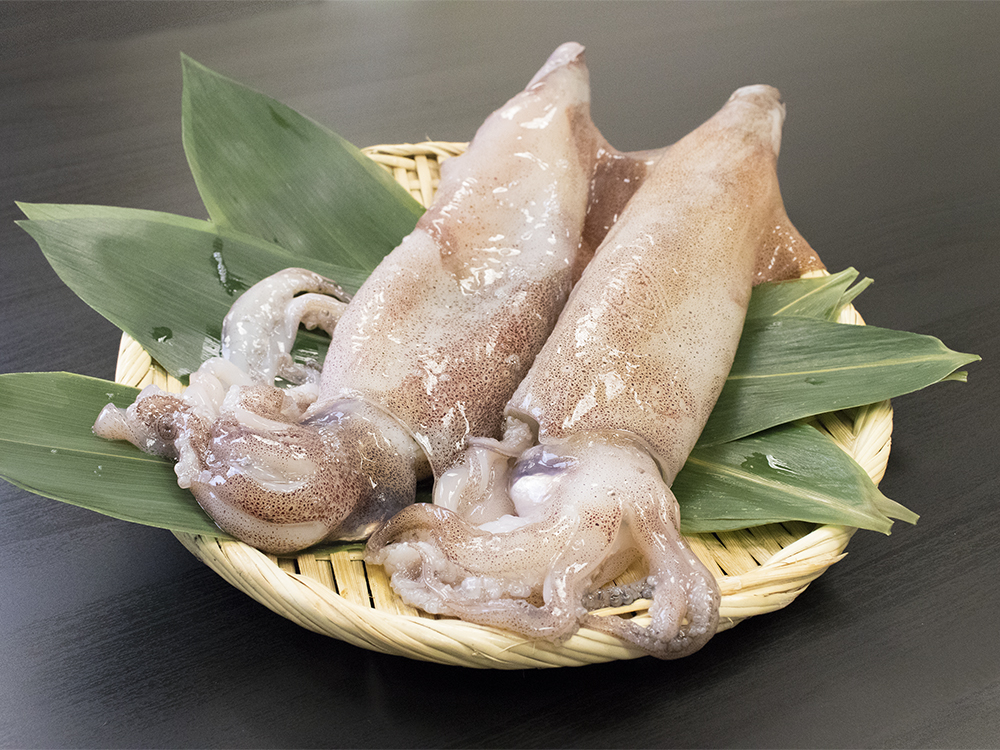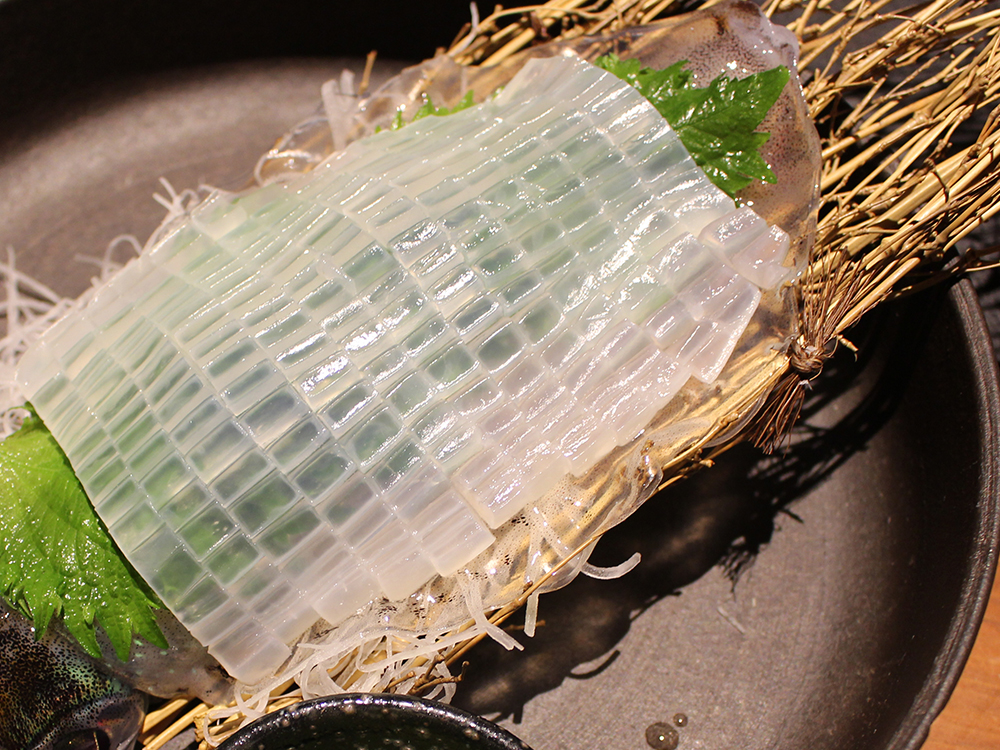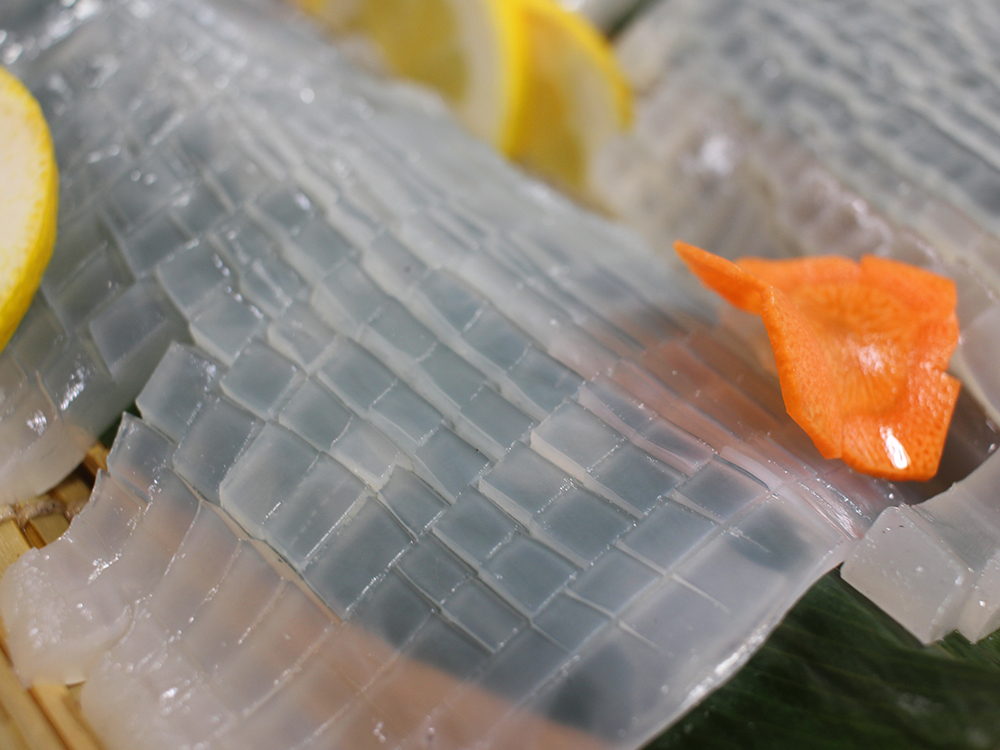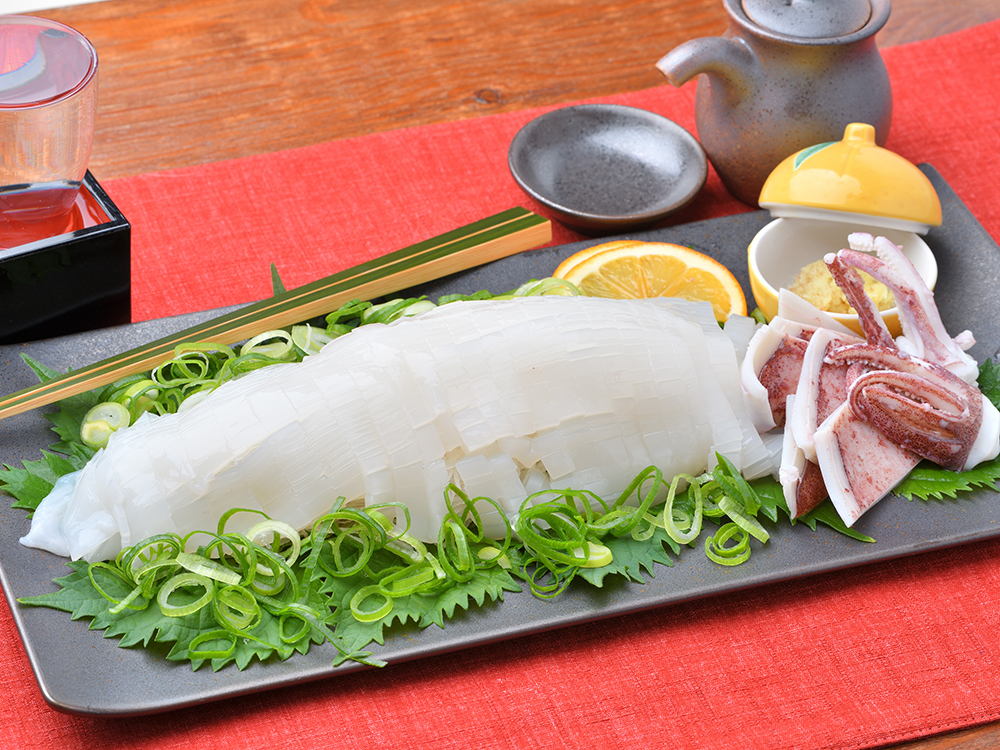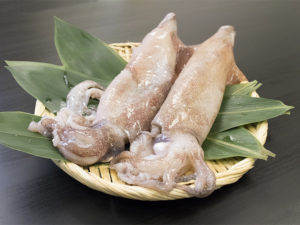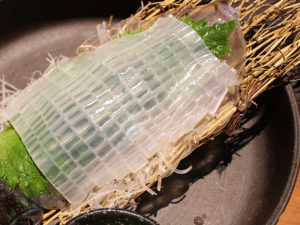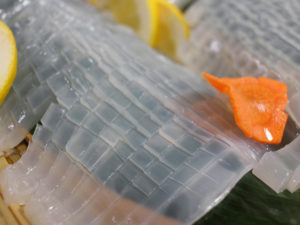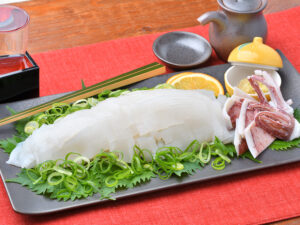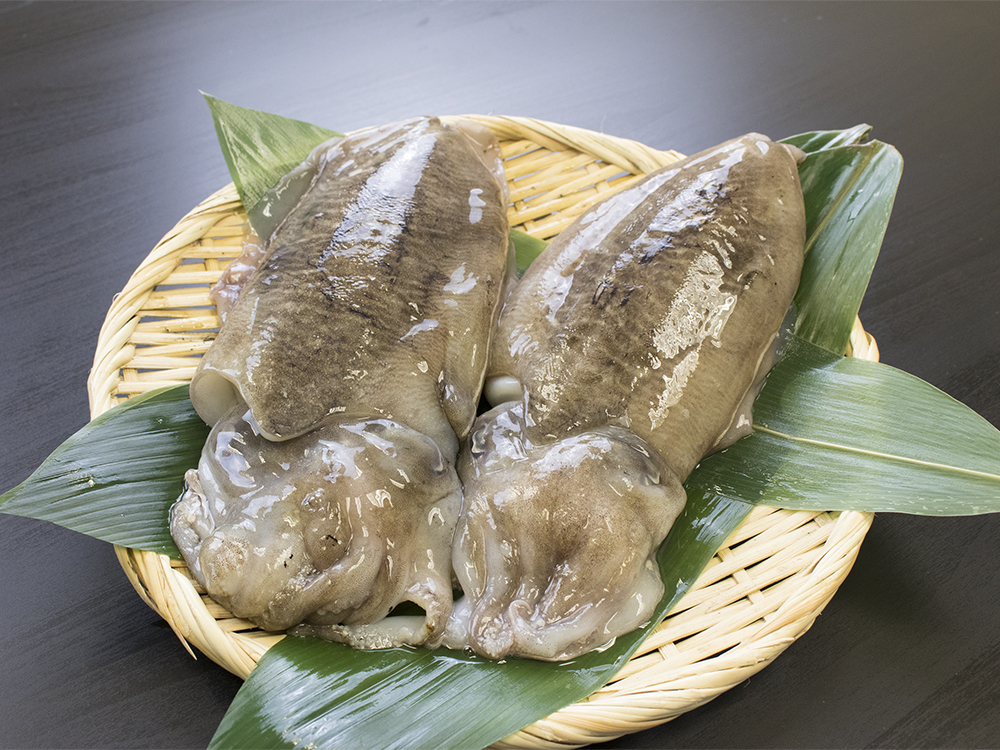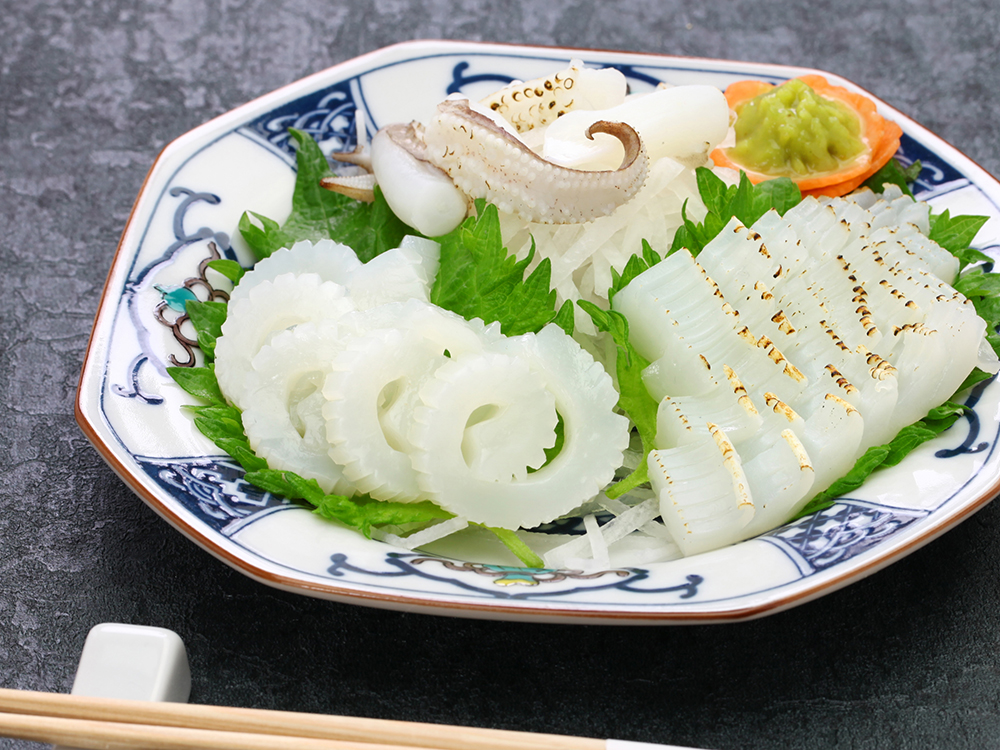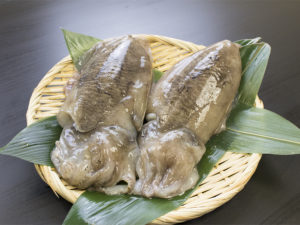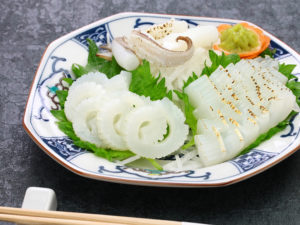Bonito caught off the coast of Japan is in a league of its own, offering a depth of flavor that sets
it apart from the usual varieties. In Japan, it reaches its peak season in spring and autumn, making it a
highly sought-after choice for discerning customers.
抜群の舌触りがお客様の心を満足させます。 春と秋が季節で春には「のぼり鰹」、秋には「戻り鰹」として知られています。
SAYORI – Halfbeak
Known as the “beautiful fish that heralds spring,” Sayori (Japanese halfbeak) is a high-quality white
fish at its peak from late fall through spring, though it can also be enjoyed in early fall. Its translucent flesh makes it perfect for hosozukuri and itozukuri, while its delicate flavor shines as a hikarimono sushi topping.「春を告げる美しい魚」といわれ、秋冬から春にかけて旬になる白身の高級魚です。
細造りや糸造りが美しい半透明の身に似合います。もちろん光物の寿司種としてもお使いください。
HOTARU-IKA – Firefly squid
In Toyama and Hyogo Prefectures, Hotaru Ika (firefly squid) has long been enjoyed as a seasonal spring delicacy. It’s best savored as okizuke (a type of seasoned and pickled dish), marinated in vinegared miso, or lightly fried as tempura.
「春の風物詩」として日本海側の富山県や兵庫県で賞味されてきました。酢味噌和え、天ぷら、寿司だねなどにお使いください。
KEGANI – Horsehair crab
In the Sea of Okhotsk, the peak season for hairy crab runs from March to August, as the floating sea
ice recedes. During this time, young crabs are more affordable than hard-shelled ones. While they
contain less meat, their flesh offers a more concentrated sweetness, making them a sought-after
delicacy.
オホーツク海ものは流氷が去るこれからの8月までが季節です。今の時期の若ガニは堅ガニに比べて値段がお手頃なだけでなく、身が少ない分だけ栄養と甘味が一層凝縮されています。
delicacy.
SHIRAKO – Cod roe
Spring is the peak season for Shirauo (icefish), as they return to the rivers to spawn between
February and April. Fresh Shirauo is best enjoyed as sashimi with wasabi soy sauce, marinated in vinegared miso, or served as a gunkan-maki roll.
春が季語の魚で、産卵期に川に上ってくる春の2~4月が旬と言われます。生のものはワサビ醤油や、酢味噌和え、軍艦巻きのなどにいかがでしょうか。
KISU – Smelt / Whiting
The peak season for Kisu (Japanese whiting) typically begins in June, but in the Kyushu region, it starts as
early April. This delicate fish is best enjoyed using the yakishimo method—grilling the skin with a burner before chilling it in ice water —or the konbujime method, where it is lightly salted and wrapped in kelp
to enhance its umami.
産卵のため岸近くに回遊してきたキスを獲るそうごち網・流しさし網漁業が5月に解禁されて、新鮮なキスが店頭にならびます。きれいな砂の海底を好む魚で、特に福岡市志賀島は良質なキスが良く穫れる漁場として知られています。
HOUBOU – Sea robin
Houbou (sometimes called Gurnard) is a delicious fish enjoyed year-round. Its firm, white flesh is rich in umami, making it perfect for sashimi, grilling, or simmered dishes.
年間通して美味しい魚です。白身ですが淡白さをそれほど感じさせないほどに旨みがあり、煮付け、焼き魚、刺身など様々な調理法に合う美味しい魚です。
AKAMUTSU – Black throat
“Benihitomi” is a brand name for Akamutsu (Blackthroat) caught in the seas around Tsushima and Iki Island
using the traditional Jigokunawa fishing method. Known as the “King of Akamutsu”, it is renowned for its
exceptional quality and flavor.
対馬、壱岐の地獄縄という漁法でとれたアカムツを紅瞳と呼びます。最高の鮮度と脂ののりでアカムツの王様です。
KASAGO – Marbled rockfish
Caught throughout the year and delicious in all seasons, seasonal language designates
this as a Spring fish. Called arakabu in Fukuoka, people especially like to prepare it as a sweet-boil. Despite the extremely delicately flavored meat being prone to losing its freshness, we will deliver it to you directly from the Fukuoka Market while it is still fresh.
季語で言えば春の魚ですが、1年を通して水揚げがあり季節を問わず美味しい魚です。福岡ではアラカブと呼ばれ煮つけなどにするなど地元で大変親しまれている魚です。非常に上品な味わいの白身は一方で鮮度が落ちやすいのですが、産地の福岡市場から新鮮なままお届けします
SUZUKI – Japanese Sea bass
Normally, Japanese sea perch is considered a fish of early Summer.
However, this year the catches started arriving much sooner than in the years passed. Often prepared as arai or a broil, it is also commonly used in French cuisine. The un-fishy flavor is sure to be a pleaser.
通常ですと初夏の魚といったイメージですが、今年は例年に比べかなり早い時期から入荷が始まっています。洗いや、焼き物によく使われ、日本食以外にフレンチでも良くつかわれる素材です。クセのない味わいは納得の美味しさです。
ITOYORI – Threadfin bream
The brilliant pink meat not only is delicious but also adds a burst of color to the cuisine, especially delicious when marbled by flash boiling with hot water. The perfect amount of fibrous texture of this white fish lends to a perfect bite. Go light if sweet-boiling or go for preparation methods such as soups that accentuate the delicate flavor. Those caught in Hagi, Yamaguchi Prefecture are the best during this season.
華やかなピンク色の刺身は美味しさだけではなく料理に彩りも添え、霜皮造りの刺身は絶品です。適度に繊維質で舌触りが良い白身です。煮るなら薄味、または椀種など繊細な味を生かす料理法が合います。この時期は山口県の萩産がおすすめです。
MEJINA – Largescale blackfish
Compared to the Largescale blackfish that are caught in the summer, those in the winter are in their prime with added marbling and less fishiness. The crunchy texture of the meat is said to be levels above red sea bream.
We recommend serving this fish as matsukawa zukuri, leaving the well-marbled skin intact.
寒い時期のメジナは夏場に比べて臭みもなく脂が程よくり食べごろになります。コリコリとした身の食感は真鯛よりもかなり上ともいわれ、脂ののった皮目を残したままマツカワ造りにするのもお勧めです。
TACHIUO – Beltfish
Although the spawning season for beltfish is between June and October and it is said that they are
most tasty during that time, they grow even bigger from Fall through Winter and gain marbling, lending to even more flavor.
大き目き目のサイズで質のいいのものが市場に入ってきています。
是非お試しください。
KURODAI – Black bream
In Fukuoka, Kurodai is called “Meita” or “Chinu”, depending on its size. When it is over 11 inches, they call it “Chinu”.
During its best season, the taste of Kurodai is said to be as good as Madai, if not better.
福岡ではクロダイのことをその大きさに応じてメイタあるいはチヌと呼びます。大体30cmを超えるとチヌとよびます。旬を迎えるクロダイは、マダイにも劣らない味と言う方もいます。
SAWARA – Japanese Spanish Mackerel
As described in the characters, Spanish mackerel is a Spring fish. In western Japan, it is said that the approaching Spring is the best season to enjoy it.
Fresh Spanish mackerel can be widely enjoyed as sashimi, saikyozuke (pickling in Kyoto-style miso) or reianyaki grill.
鰆は字のごとく春の魚、西日本ではこれからの春がサワラの旬といわれています。新鮮なものは刺身に、西京漬けや幽庵焼きなど幅広くお使いいただけます。
KANPACHI – Amberjack(Wild)
The big-three of buri family are yellowtail, yellowtail amberjack, and amberjack. Among them, the
amberjack may have the least marbling but still possesses a fine flavor and tight meat.
Wild caught amberjacks are considered to be high-class fish as they are less-caught than yellowtail or yellowtail amberjacks. Enjoy this delicacy as sushi, sashimi, shabushabu, and even teriyaki.
カンパチはブリやヒラマサに比べ最も脂が少ない分、身が引き締まった品の良い美味しさがあります。天然ものはブリやヒラマサより漁獲量が少ないということもあり、市場では高級魚として扱われます。寿司、刺身その他しゃぶしゃぶや照り焼きにもお使いください。
YAZU/INADA – Young Yellowtail
A young yellowtail, the names given to this fish vary by region. It is light and fresh in flavor compared to fatty yellowtail and is characterized by its firm meat.
More reasonable in cost, it can be enjoyed as sashimi, teriyaki or as fritters.
ブリの若魚で、地方によっては違う呼び名になります。脂が乗ったブリに比べるとさっぱりとした爽やかな味わいで、ハリのある食感が特徴です。価格も手頃で刺身・照り焼・から揚げなどが美味です。
KONOSHIRO – Gizzard shad
Gizzard shads are considered to be in their peak season between late Fall and Winter. It is a crucial topping for sushi that holds the success of the restaurant in its preparation.
There is a saying In Edo-styled sushi that states, “sushi stops at Kohada (shad), as the amount of salt and vinegar used showcases the skills of the chefs.
福岡では晩秋から冬が旬といわれます。江戸前鮨では「鮨は小鰭(コハダ)に止めをさす」と言われコハダの塩加減、酢締めの加減は鮨職人の腕の見せ所で、その鮨屋の看板にかかわるとされされるほど重要な寿司ネタです。
KATSUO – Bonito
Catches have arrived earlier than previous years and we are starting to see those from Wakayama and Tsushima in the Fukushima market. The current catch is characteristic for having little marbling in the red meat with a more refreshing taste. Searing them and preparing them as tataki draws out the fresh flavor even more. Why not give it a try?
今年は例年に比べて初ガツオの入荷が早く、和歌山や対馬のものが福岡市場に並び始めています。今の時期は赤身が多く脂が控えめで、サッパリとした味わいが特徴です。炙ってタタキにすると、爽やかな風味がいっそう引き立ちます。是非お試しください。
HAGATSUO – Striped bonito
Skipjack is spectacular when enjoyed as tataki as searing the skin draws out a fragrant aroma.
The red meat of striped bonito, in the middle between those of bonito and Spanish mackerel, doesn’t have the iron scent unique to bonito and is especially flavorful with umami.
Maximizing the proximity to the breeding waters, the Fukushima market will ship directly to the U.S., preservingthe fresh quality.
皮目を焼いたときの香りと風味が良く、「たたき」にすると絶品です。カツオとサワラの中間程度の赤身はカツオ特有の鉄臭さが無く、尚且つ旨みもあり極わめて美味です。福岡市場は産地に近い強みを活かして、最高に新鮮な状態でアメリカに直接発送します。
SUMA – Black skipjack
Black Skipjacks are enjoyed mainly in Western Japan as sashimi, salt-grill, sweet-boils and fritters. Though it is delicious all-year long, they are especially delectable during their peak season from Fall through Spring. You will feel the slight acidity and marbling that melts in your mouth when enjoying it as sashimi.
西日本を中心に、刺身や塩焼き、煮つけ、唐揚げなどにして賞味されています。通年美味しい魚ですが、旬である秋から春はさらに味がよくなります。 お刺身にするとトロッとした微かな酸味と旨味が舌の上に感じられます。
INA SABA– “INA” Brand Mackerel (Wild)
Only those mackerel, among those native to the nutritious Tsushima waters, who meet rigorous criteria of those caught in the Ina fishing port are called Ina Saba (mackerel). Standards include that they are caught on a single line,
have no scratches on their bodies, cooled in ice and water for more than 6 hours immediately after catching, and selected by size so that they make a box weighing around 5kg.
餌が豊富な対馬近海で育ったサバの中から、伊奈漁港に上がったもののうち厳格な基準を満たした鯖のみが伊奈サバとして出荷されます。一本釣り、魚体に傷が無い、水揚げした直後水氷で 6 時間以上冷やし込みされたもの、5 キロ前後でひと箱になるようにサイズ選別された物といった点が基準になります。
KAWAHAGI – Filefish
Although it is a delicious fish all year round, the flavor is extraordinary between Fall and Winter when the marbled white meat melds beautifully with the liver. It is also delicious to use liver-soy sauce on the sashimi by boiling and melting the liver into the soy sauce.
通年を通して美味しい魚ですが、春が近づく中まだ寒さの残るこの時期、白身の旨味ののった身に肝のり合わせが最高の味わいになります。
肝をゆでてしょうゆに溶かし込んだ肝醤油を刺身に使うのも絶品です。
UMAZURAHAGI–Black scrapper
Fall would be the best if enjoying this fish because the meat has recovered, and the liver has fattened.
The sizes are starting to increase now, too.
身が美味しいのは夏の終わりから秋にかけてですが、晩秋から春にかけては肝が大きくなるため、この時期も美味しい季節です。
USUBAHAGI – Leatherjacket
These are large fish that grow to 50-50cm in size. They are reasonably priced for their size with a white meat that pairs well with fat, lending it to be used in Western cuisine as well. They are a useful fish for Japanese pubs and so on due to their large size yet affordable price compared to filefish and scraper.
大きさが50~60cmほどにもなる大型のカワハギです。大きさのワリに比較的価格も安く手頃な魚です。淡白な白身は油との相性も良く、洋食素材としても利用できます。カワハギやウマズラに比べ価格が安く大きい分、居酒屋さんなど
では使い勝手が良いい魚です。
HOTARU-IKA – Firefly squid
It has been enjoyed as a seasonal food to eat during spring in Toyama and Hyogo Prefectures. Please enjoy as “okizuke” which is a type of seasoned and pickled dish, marinated with vinegared miso, or as tempura.
「春の風物詩」として日本海側の富山県や兵庫県で賞味されてきました。古くから富山では沖漬け、酢味噌和え、天ぷら、などにお使いください。
AORI-IKA – Bigfin reef squid
Aoriika is known as the king of squids, and its sashimi is considered to be of the finest quality in the squid family.
Its flesh is rich in sweetness and is very soft but also has a good amount of strength in texture. It is a very popular and crucial item used in Edomae style sushi and tempura.
「イカの王様」とも呼ばれ、イカ類の刺身の中では最上のものとされます。肉質は柔らかくも適度な弾力に富みんで極上の甘みがあり、江 戸前の寿司や天ぷらの寿司種として欠かすことのできないものです。
YARI-IKA – Spear squid
Spear squid are caught in masses between the Winter and Spring when they come towards the shore for spawning. There is a saying that says, “swordtip squid in Summer, sear squid in the winter.” The most popular are the large sear squid that are caught between Winter and Spring that are filled with young.
繁殖のため接岸してくる冬から春にかけて多く漁獲されます。ヤリイカの旬は冬から春にかけてとなり、「夏のケンサキイカ、冬のヤリイカ」と言われています。この冬から春に獲れる子持ちのヤリイカが大きく最も人気があります。
KO-IKA – Golden Cuttlefish
Known as sumiika in the Kanto area, this is an ingredient that is indispensable in Edo-style sushi or tempura. Because it is so popular as a sushi topping and sushi restaurants seeking them at once, it is a superior item that can reach up to 20,000 yen per kilo when in season.
関東ではスミイカの名前で呼ばれ、江戸前の寿司や天ぷらに欠かせない食材です。晩秋から初春にかけて旬を迎えます。たおやかな歯触りとねっとりとした甘みと旨みが魅力です。刺身はもちろん、天ぷらにしても非常に美味です。
Fish in April
Fish in April (No logo)
Fish in April (English)



















































